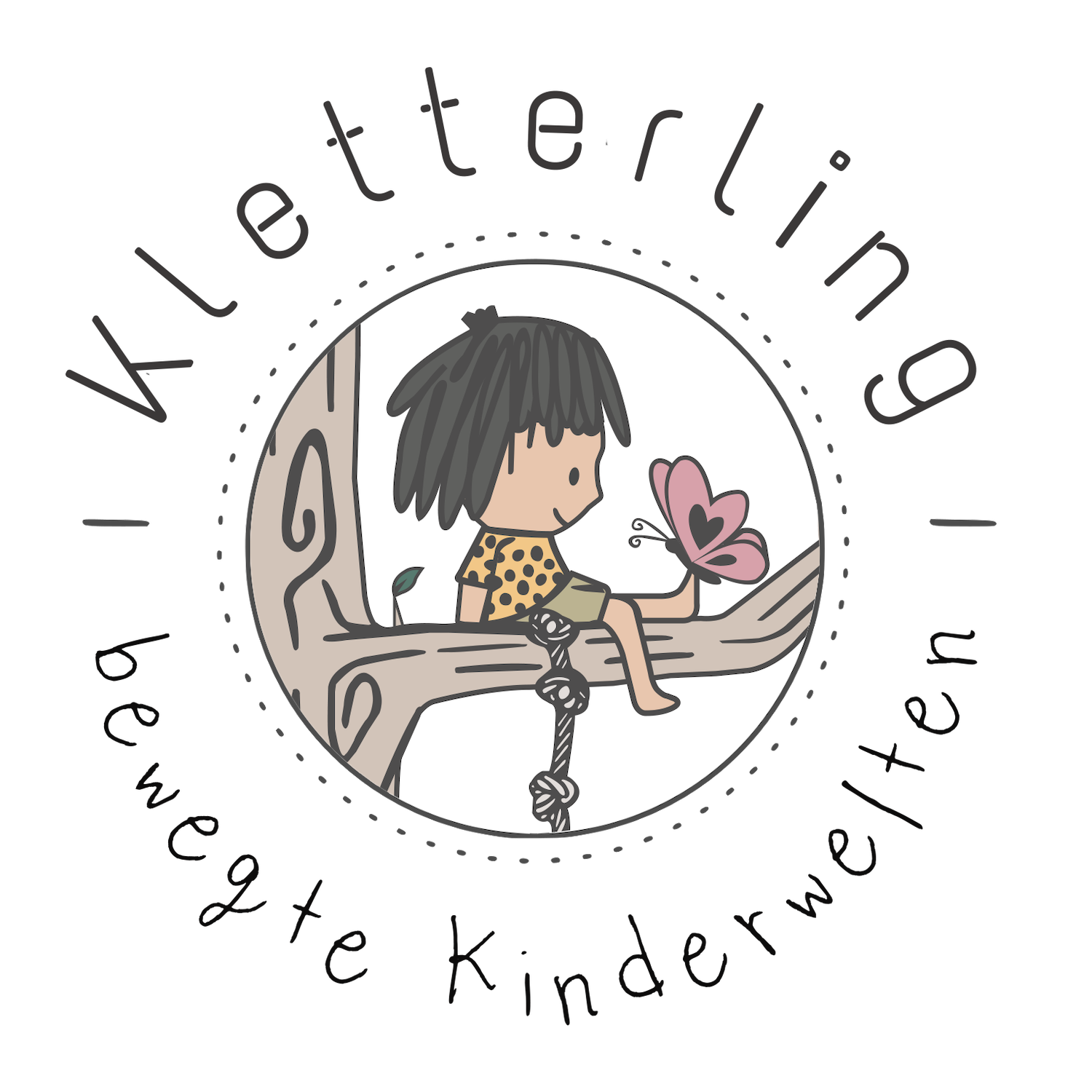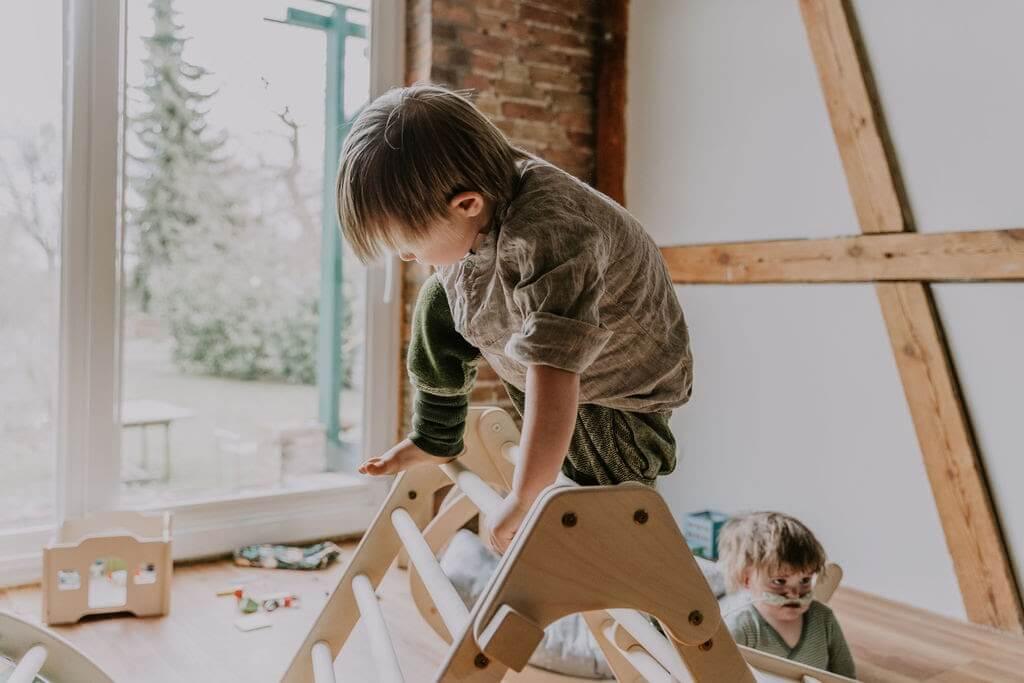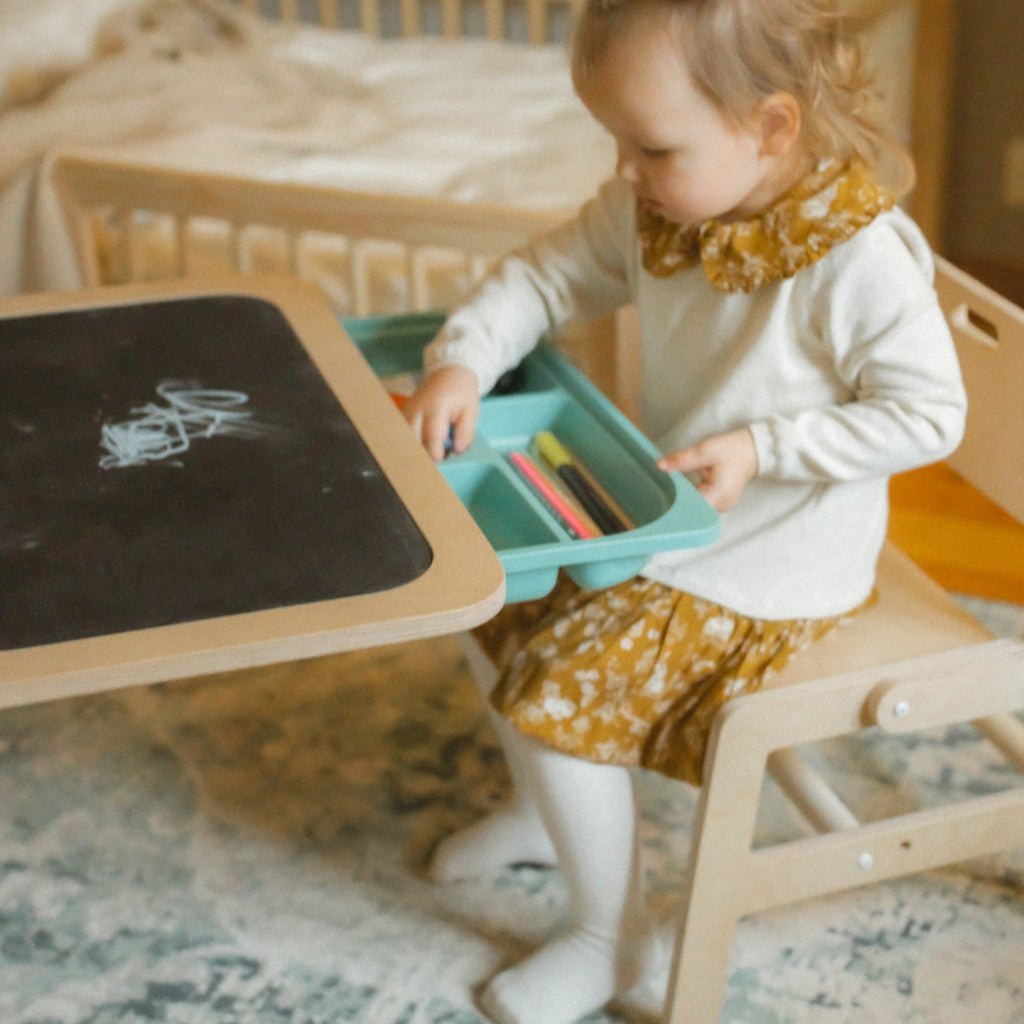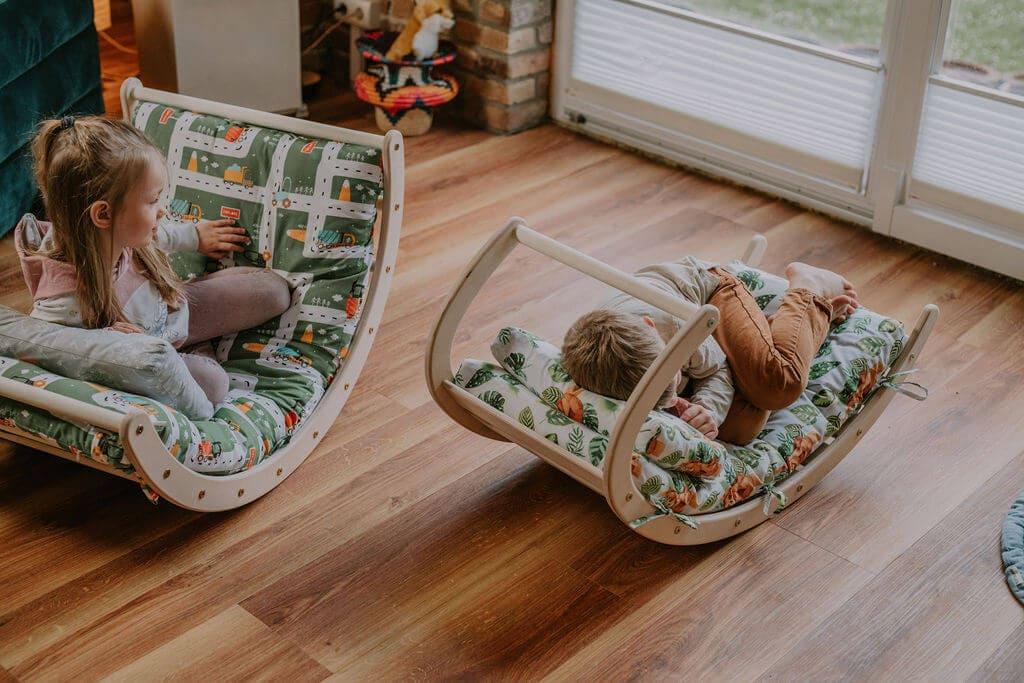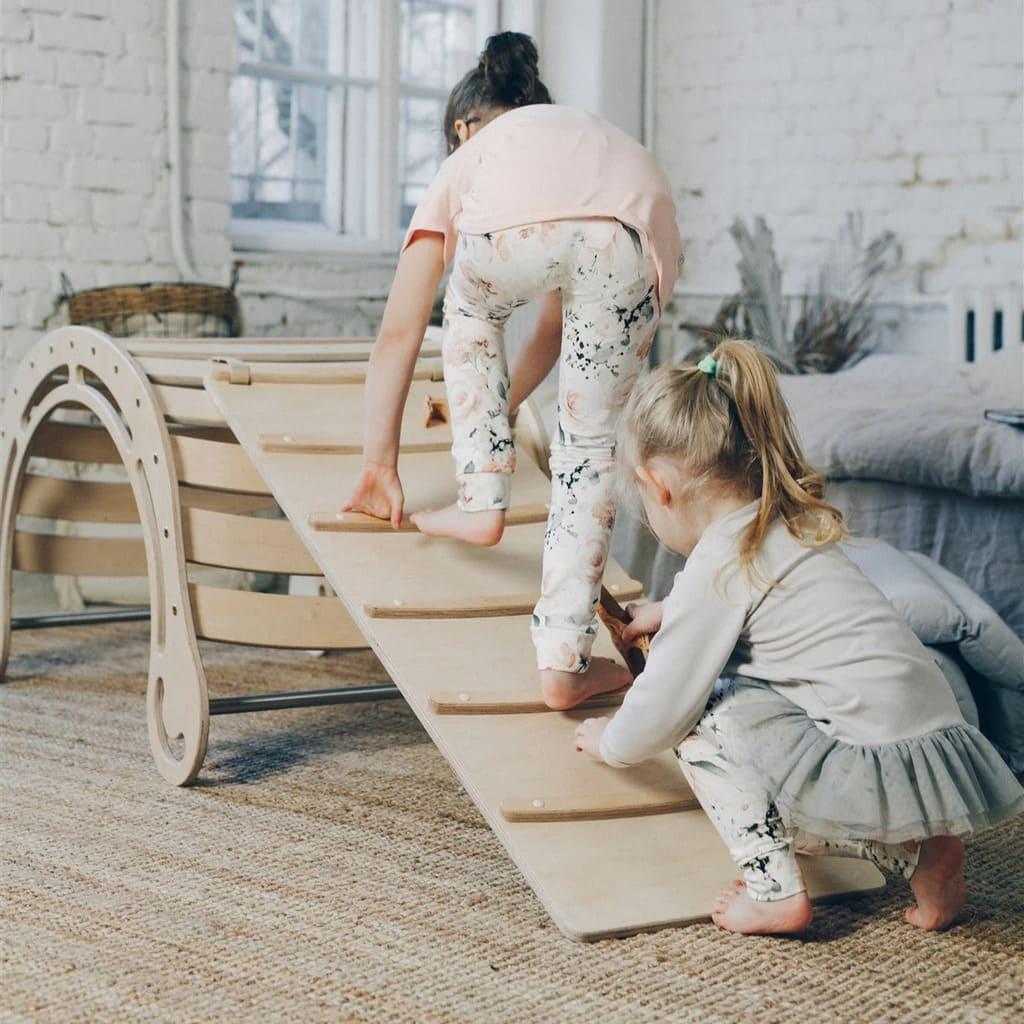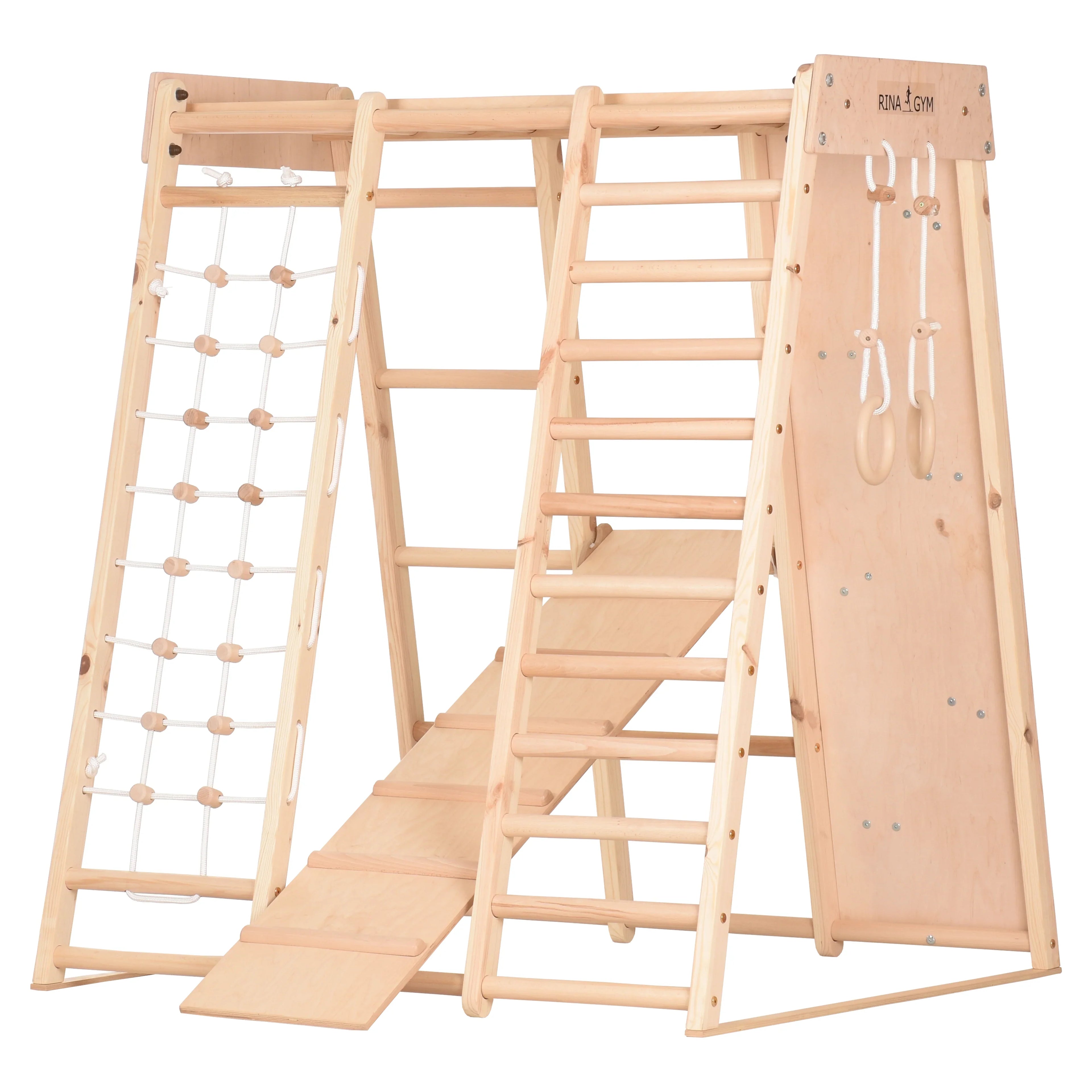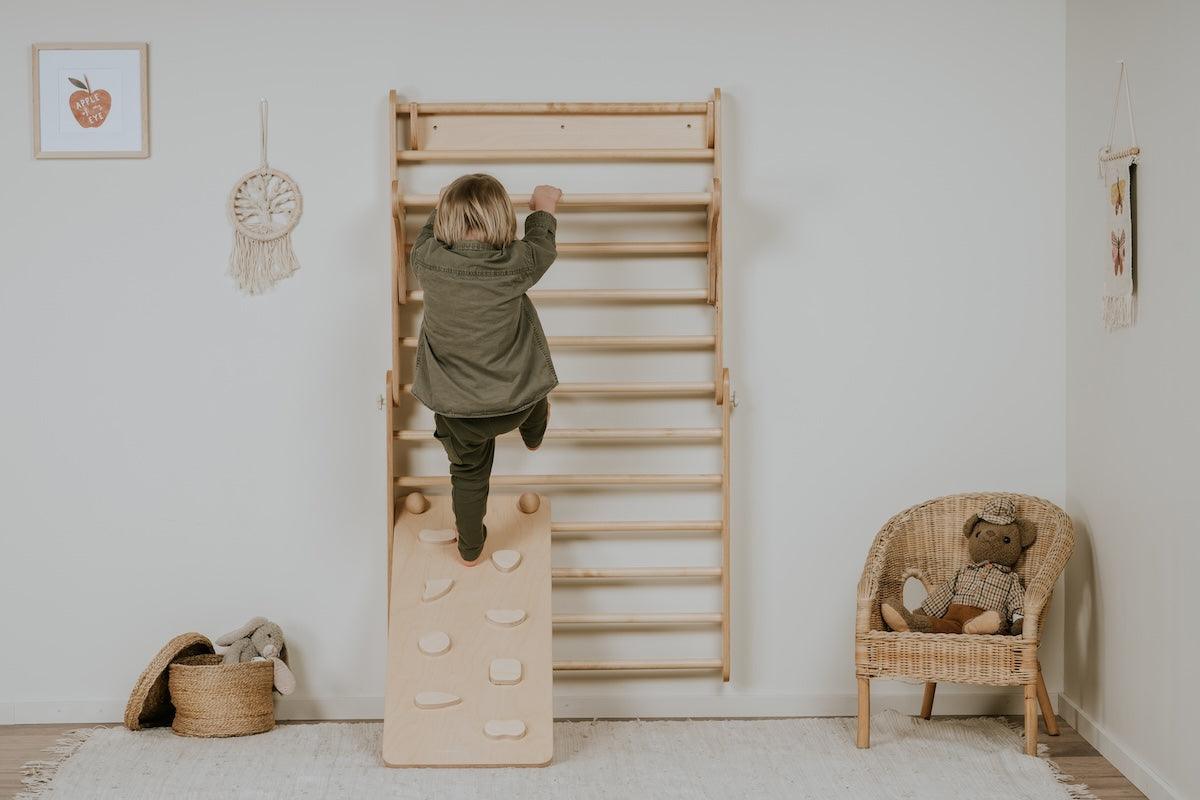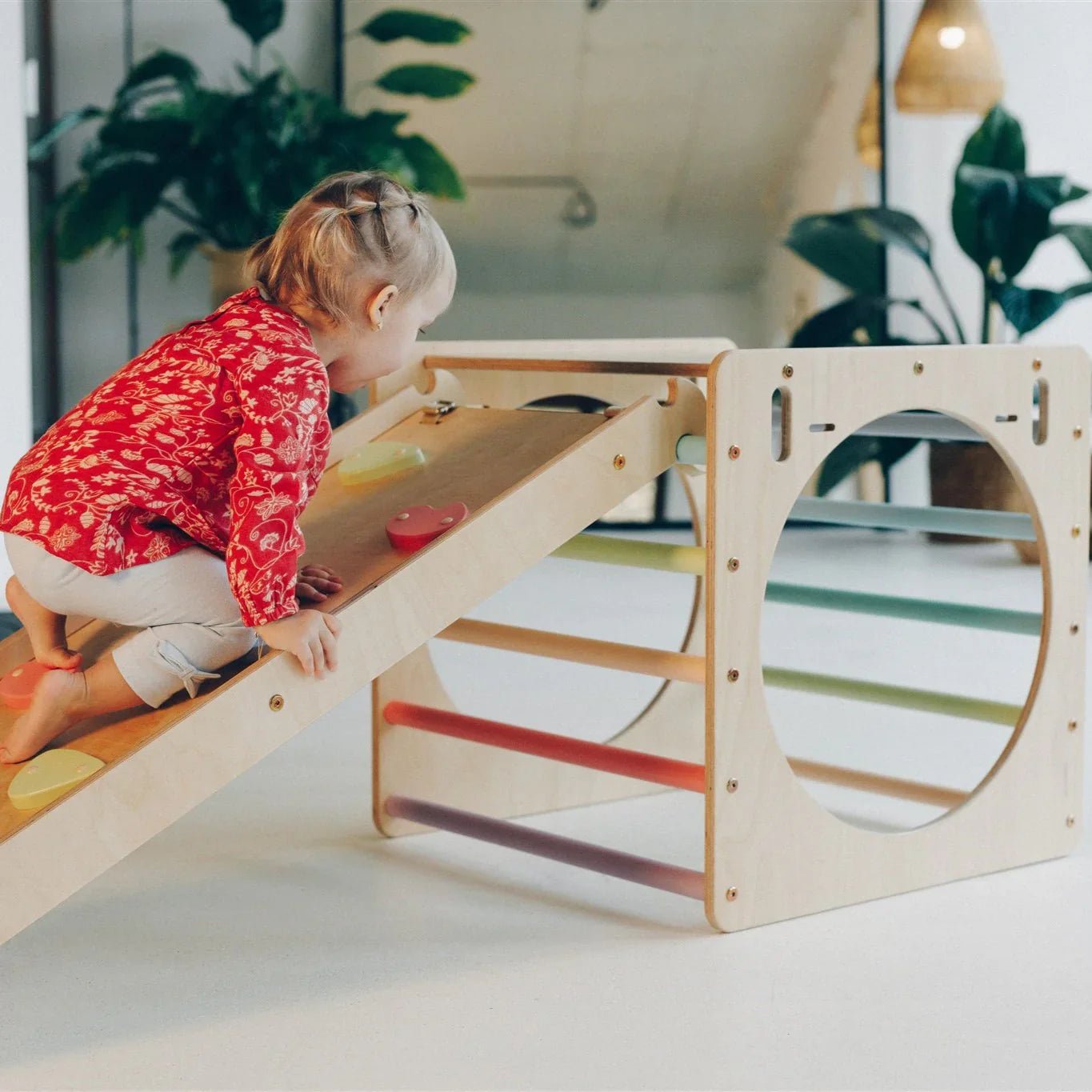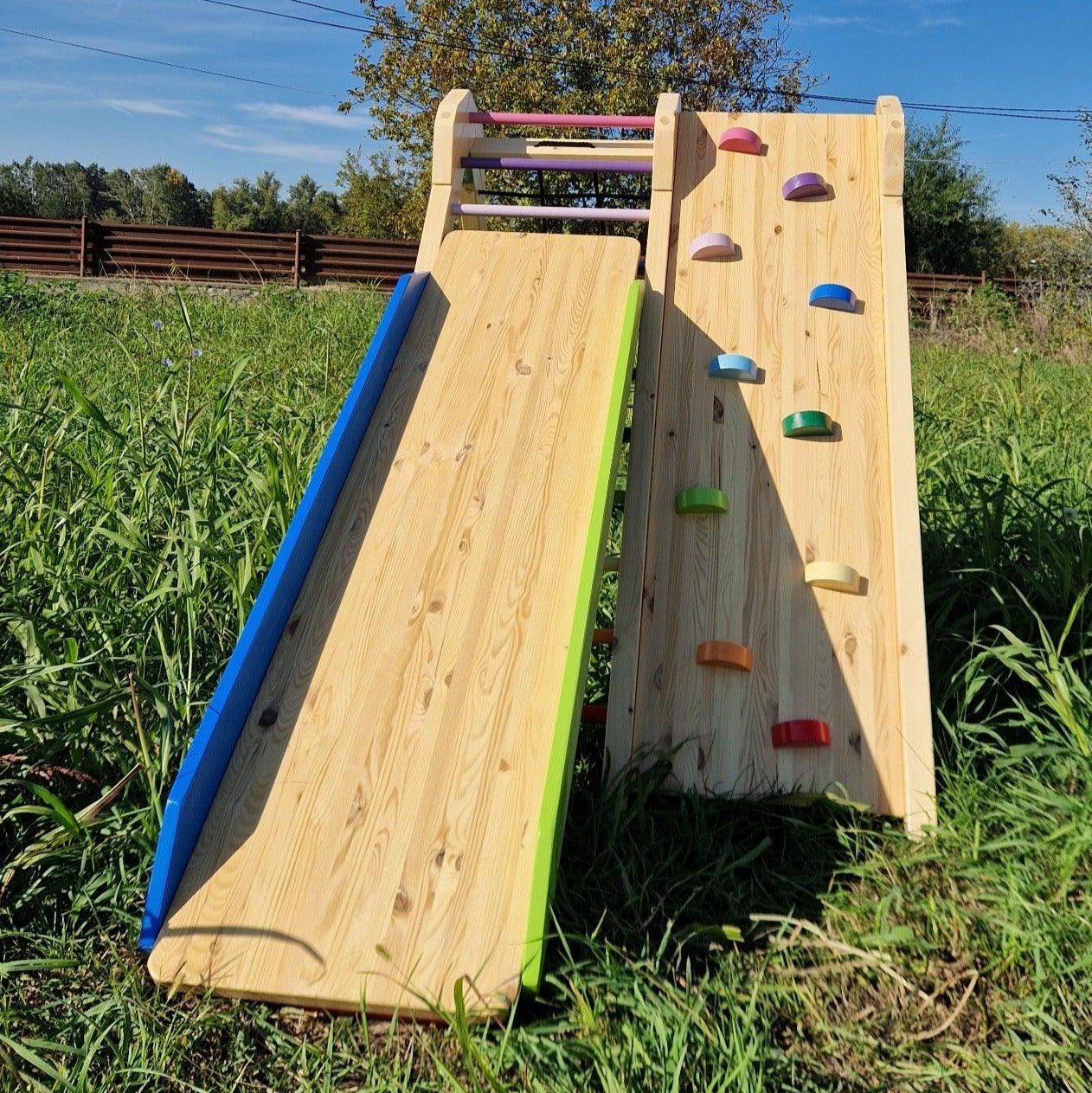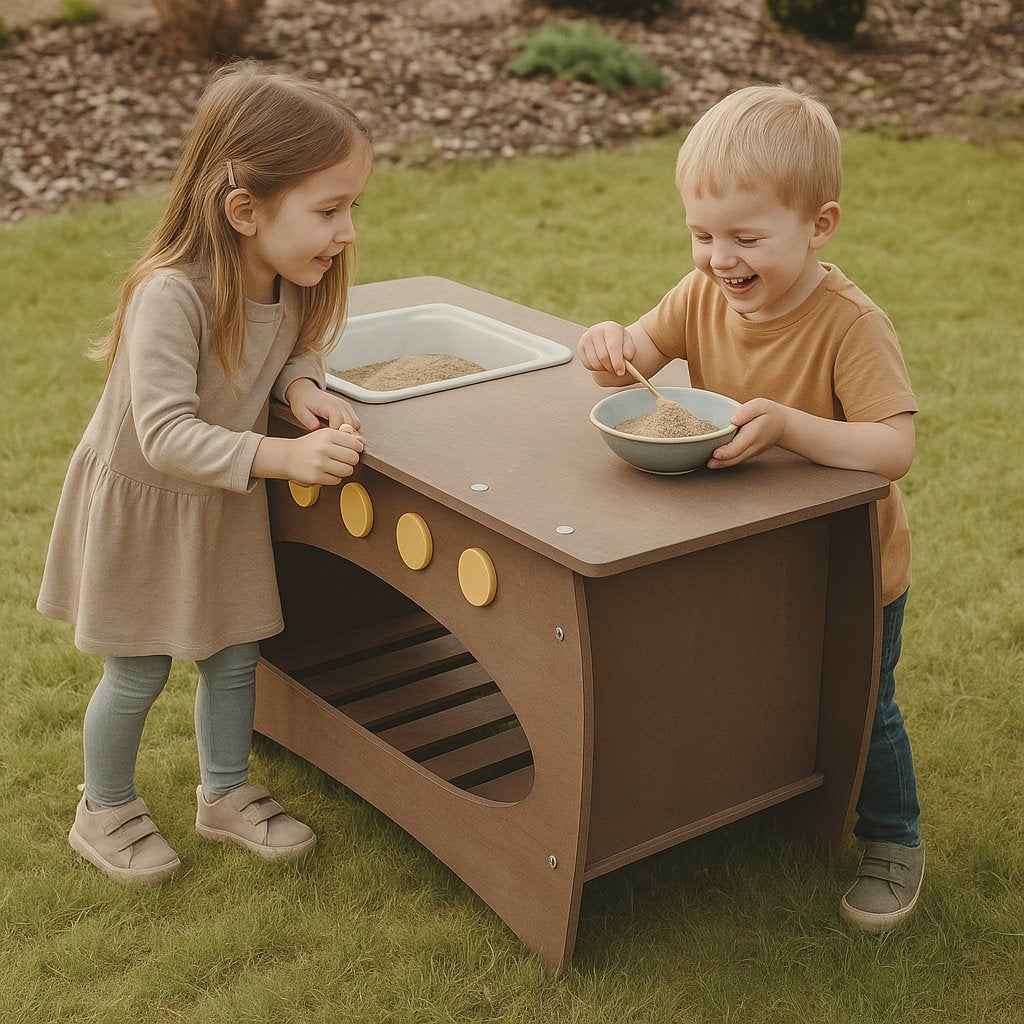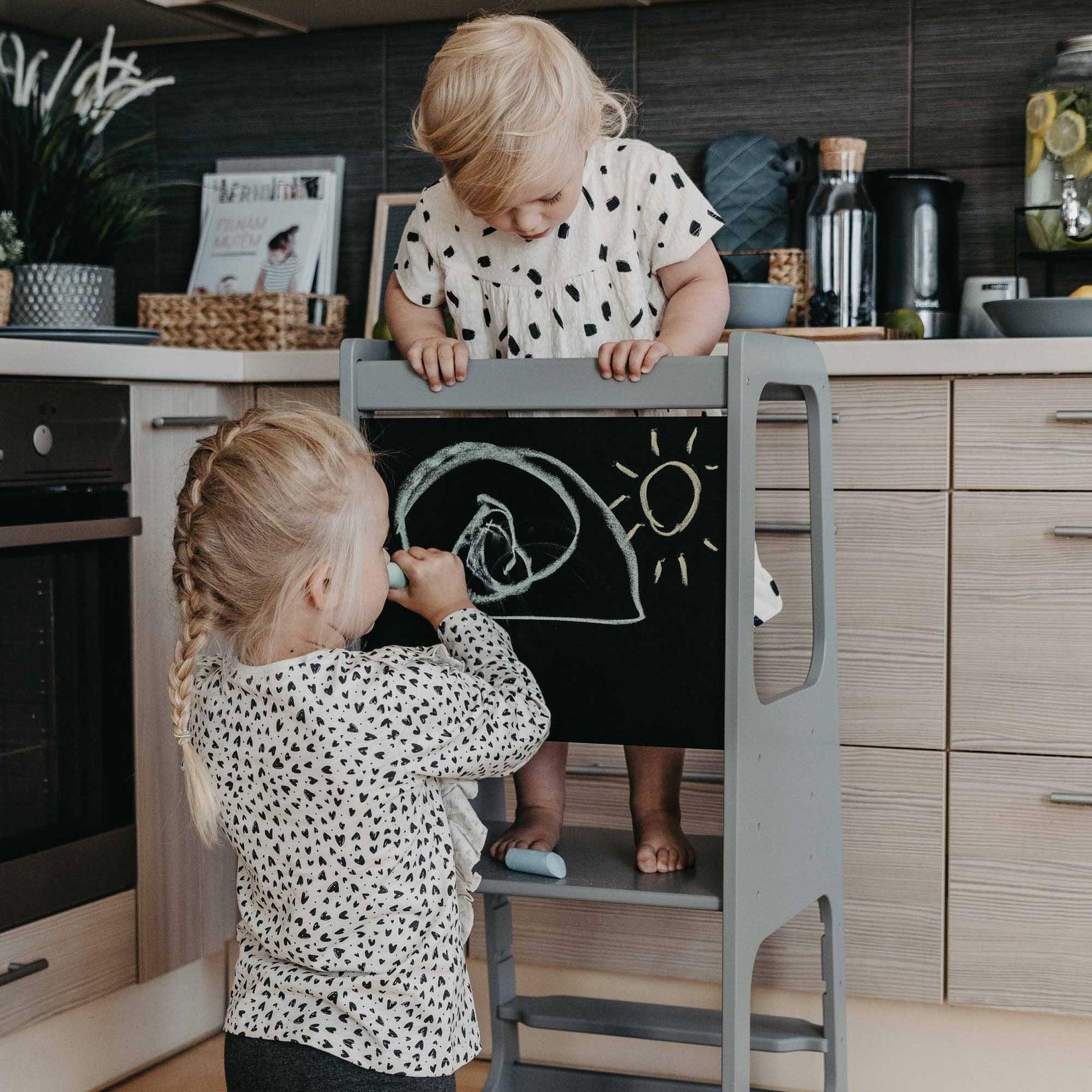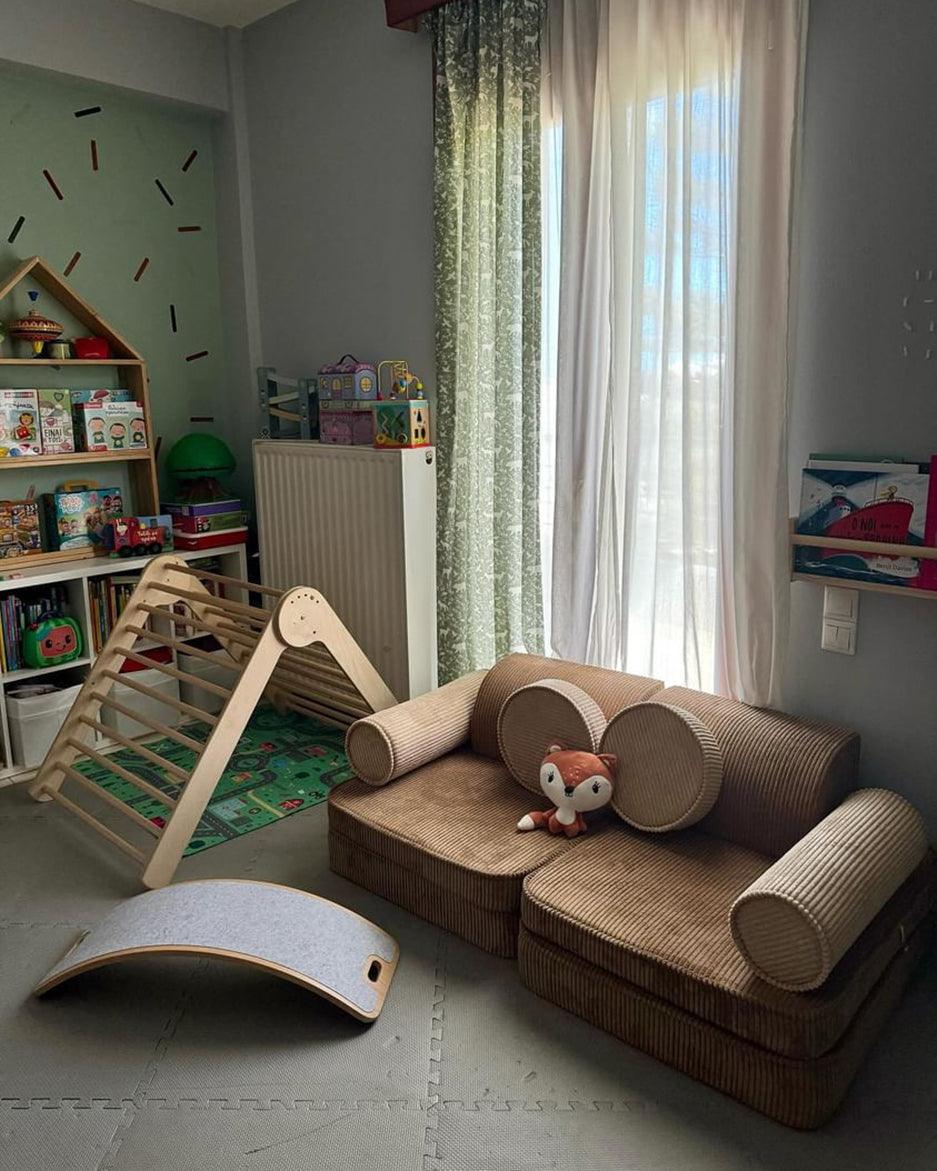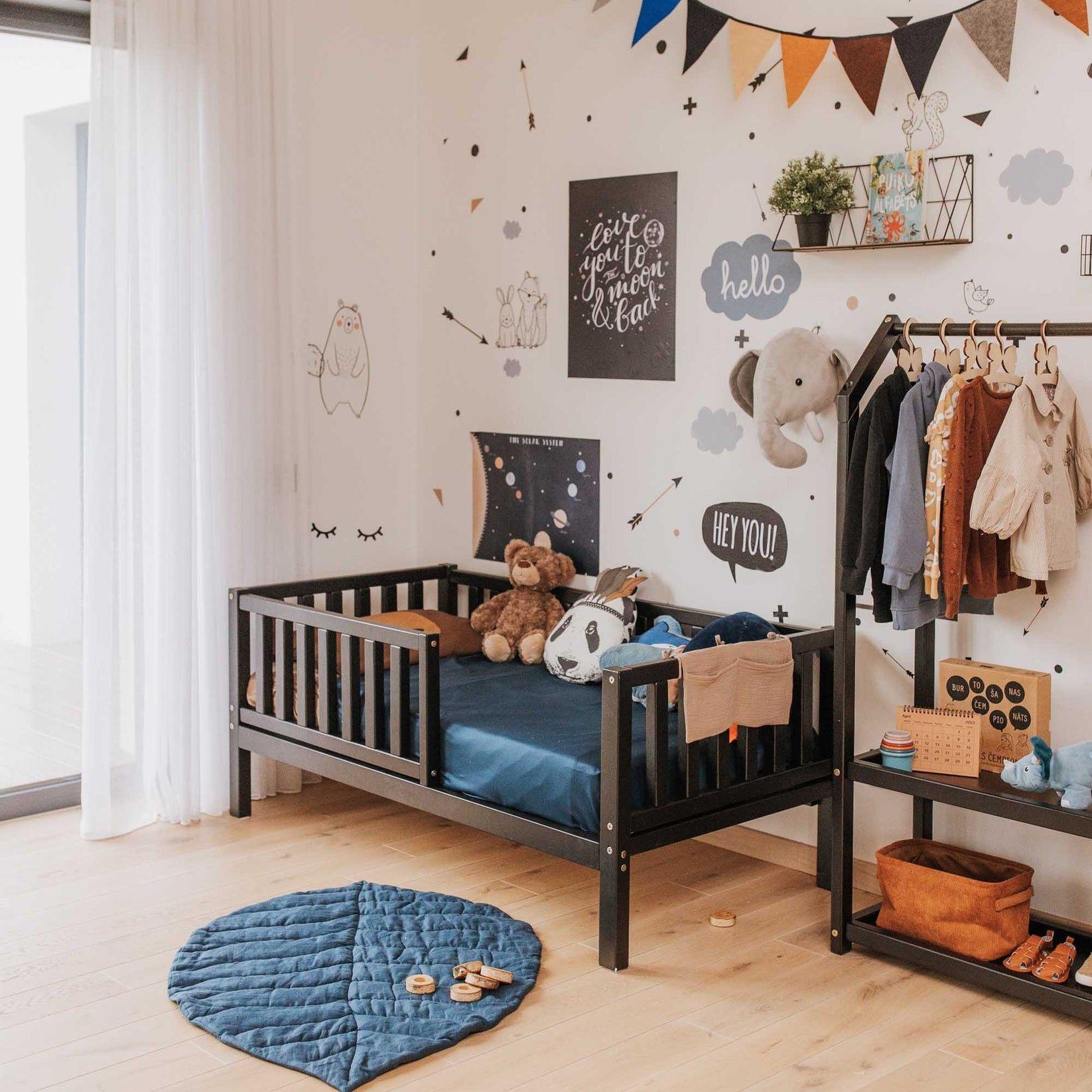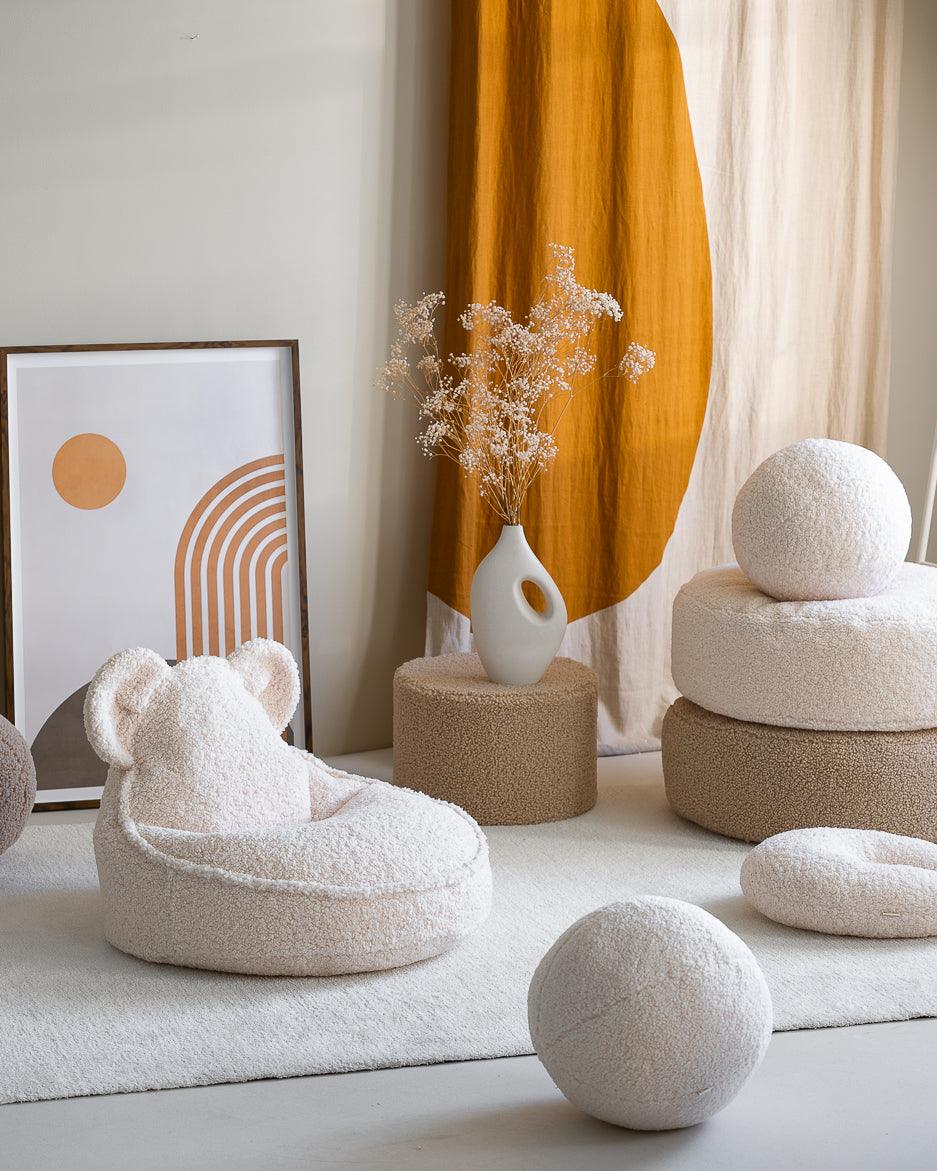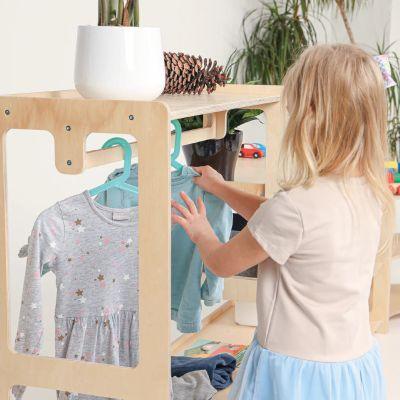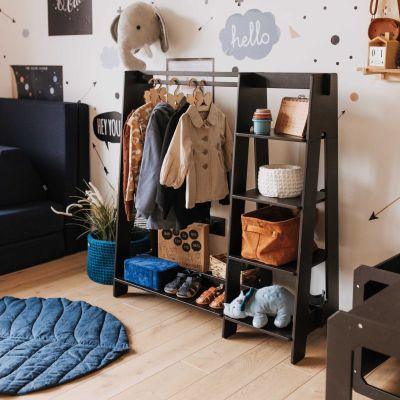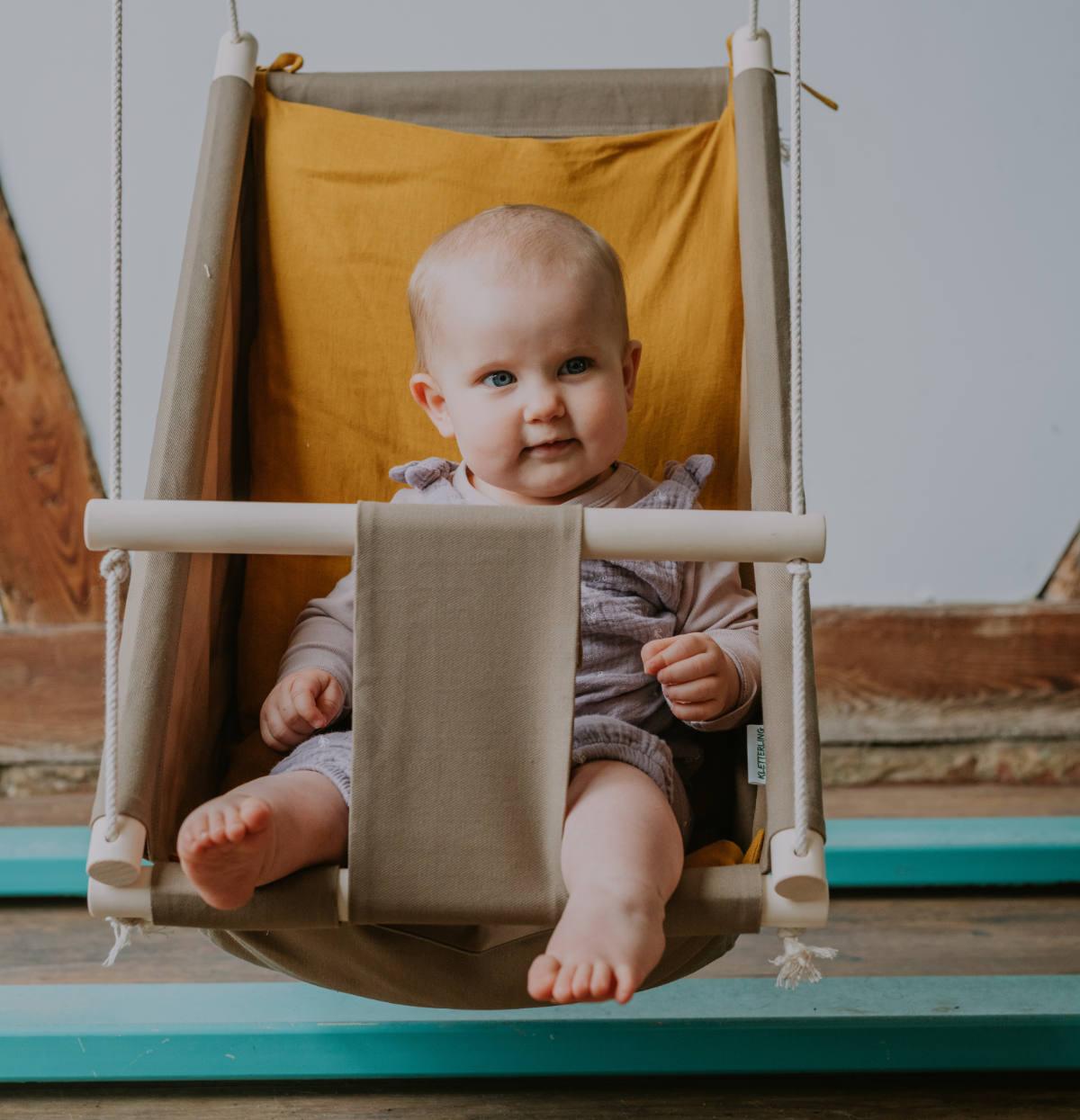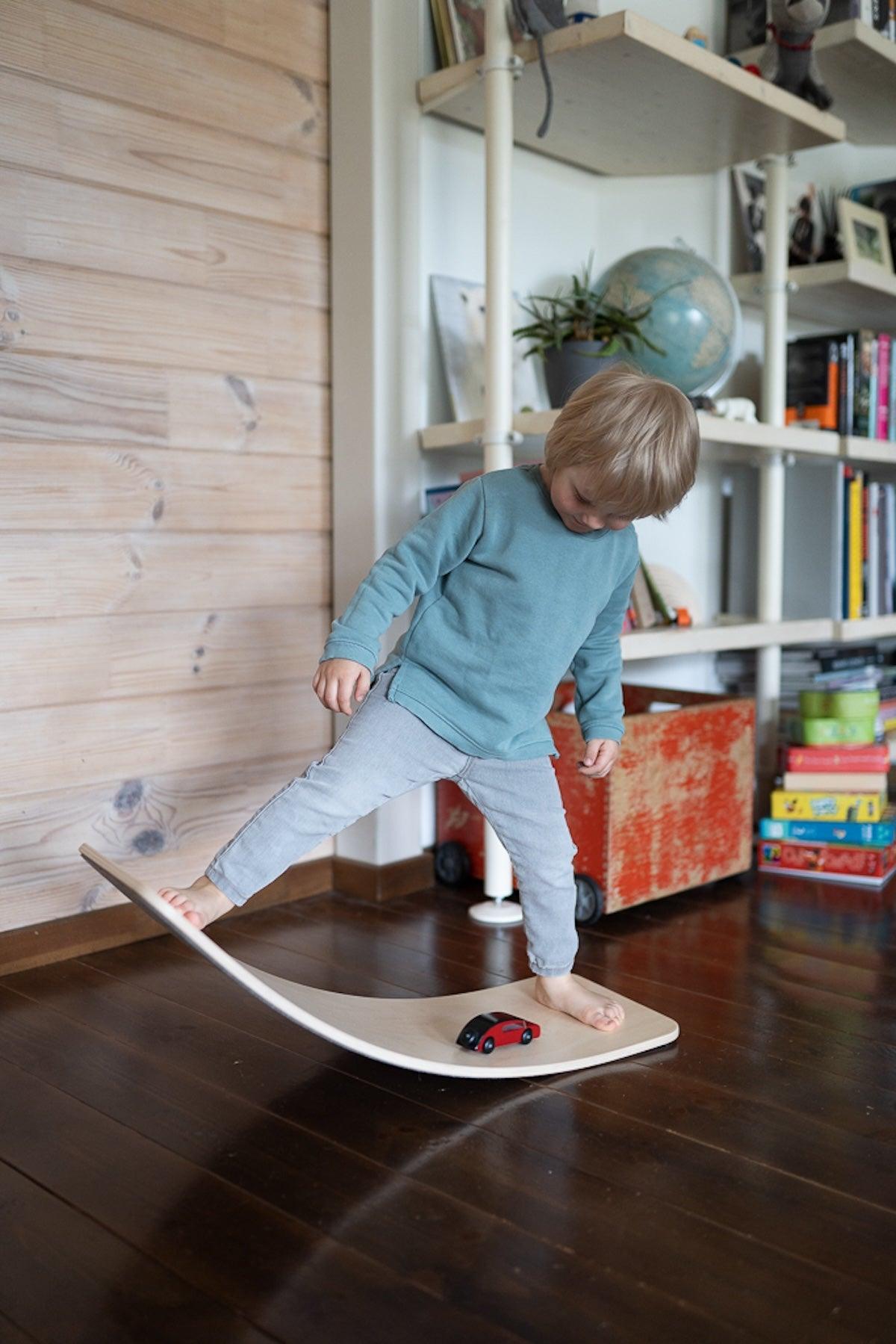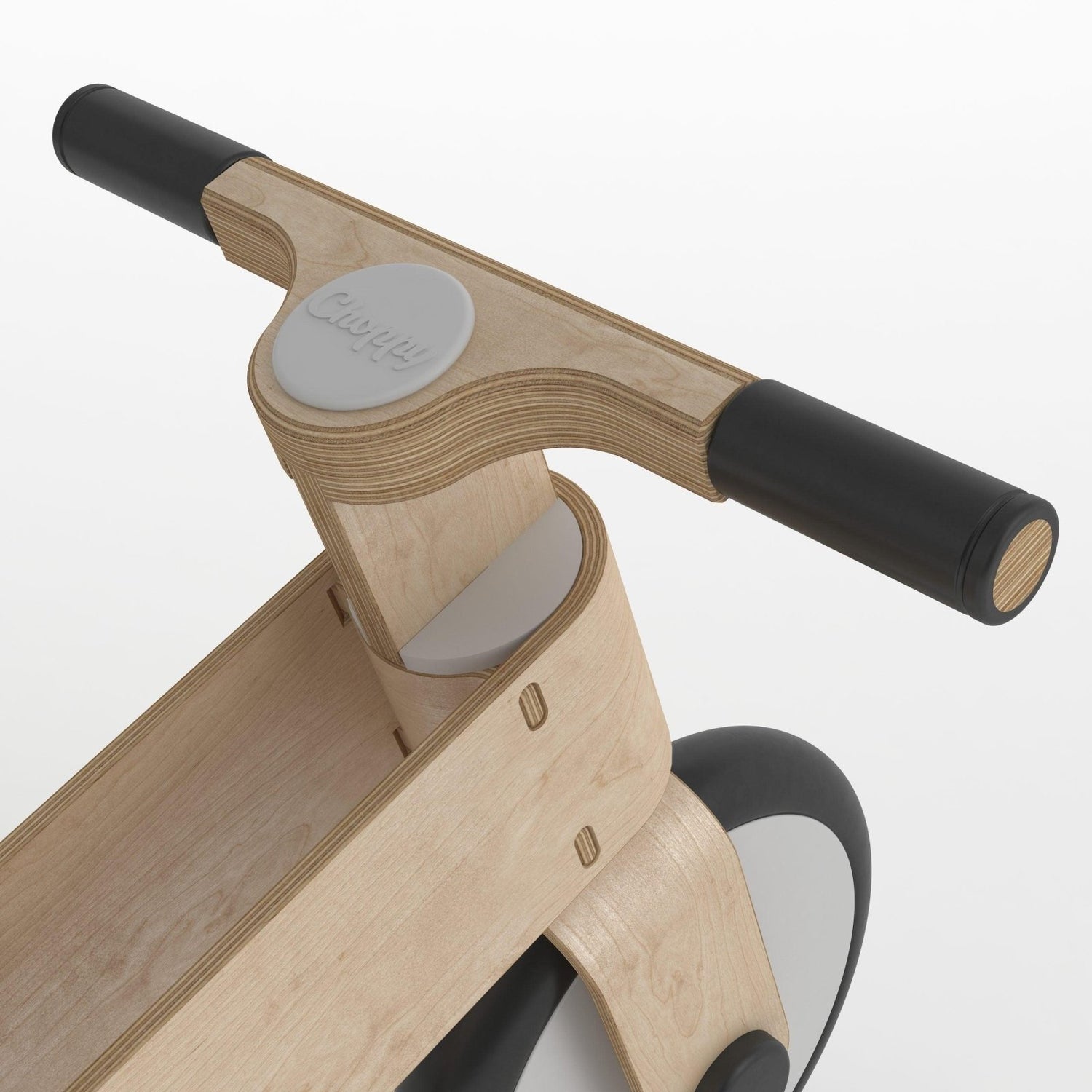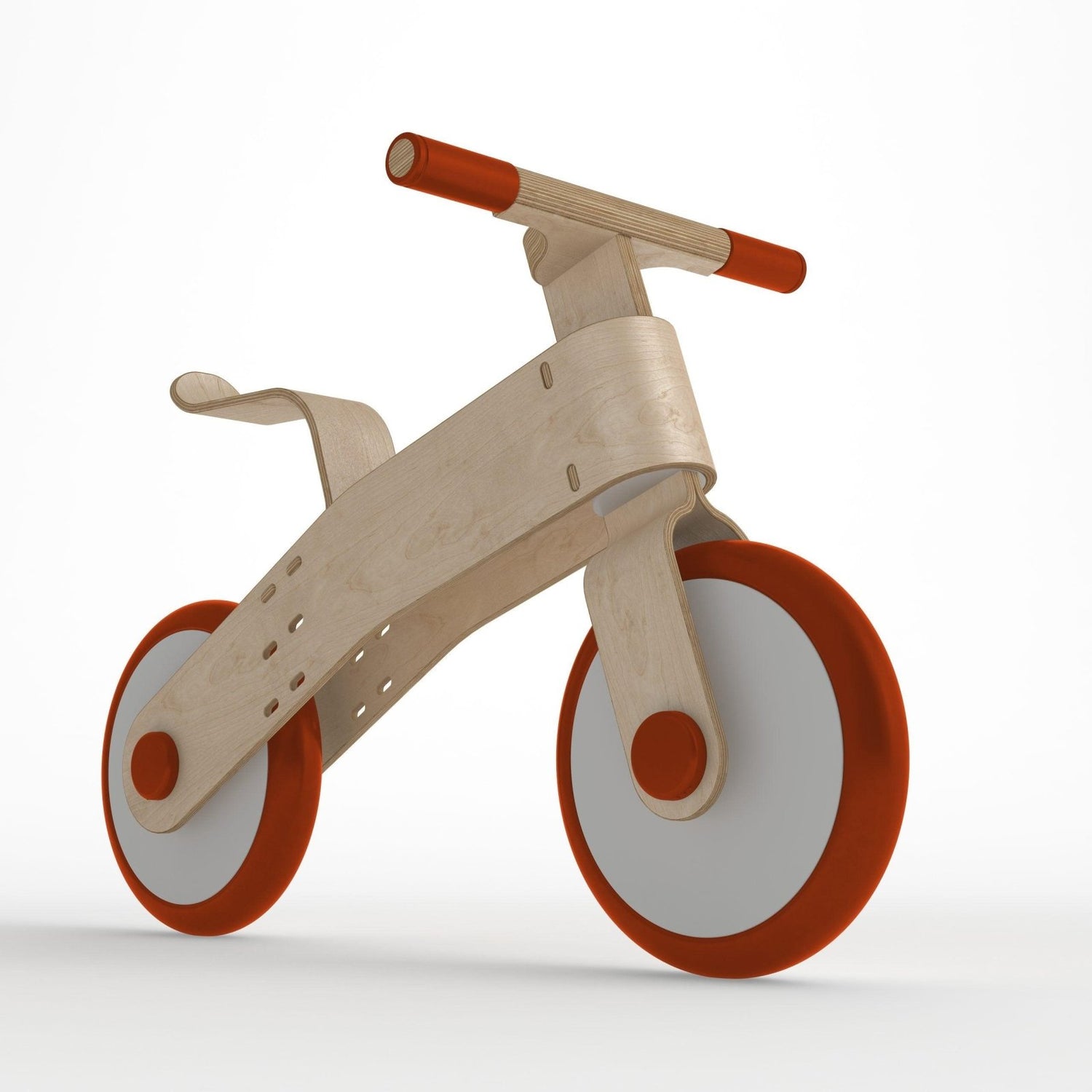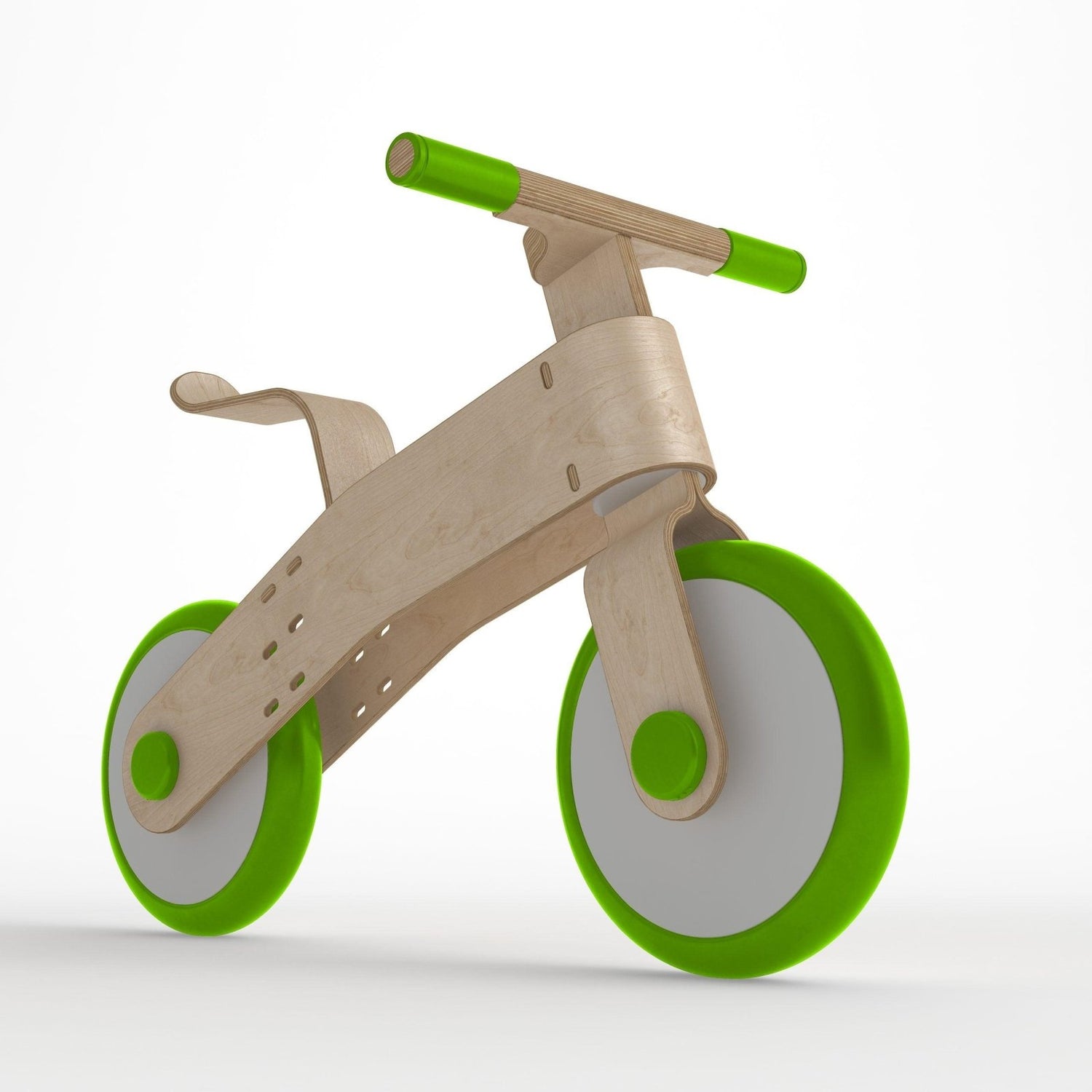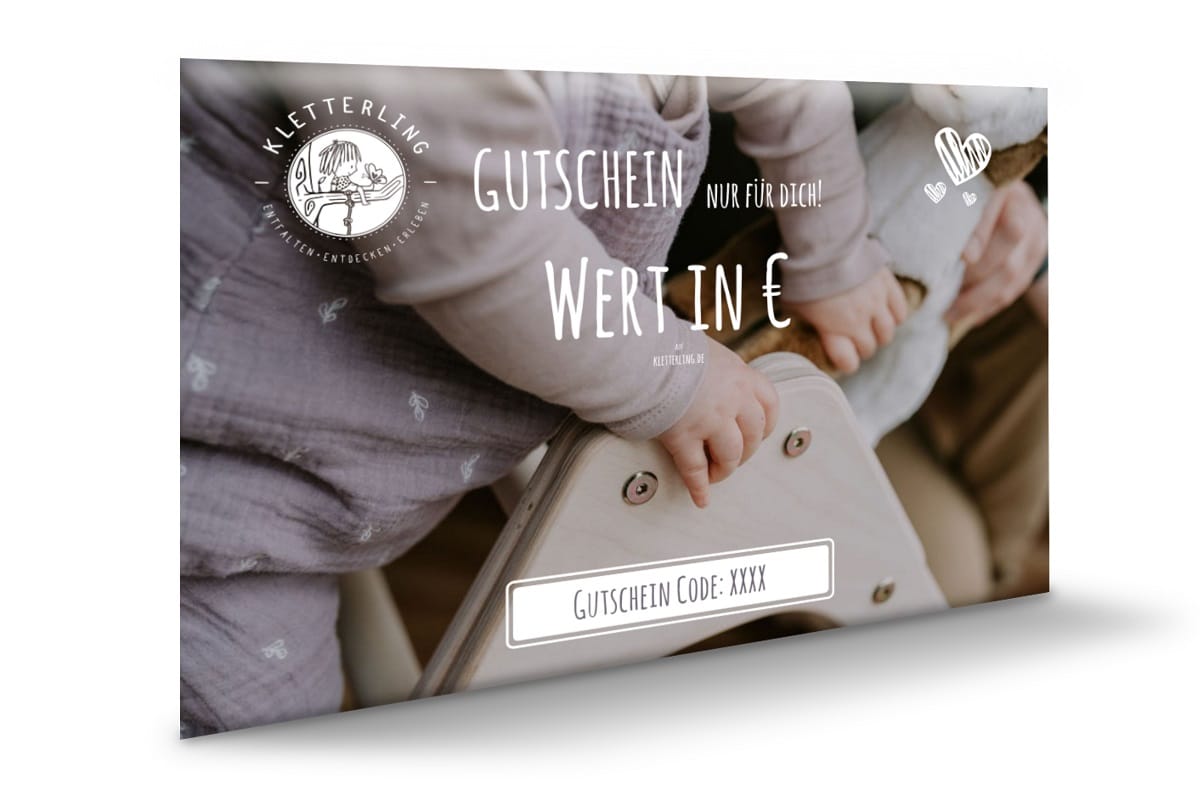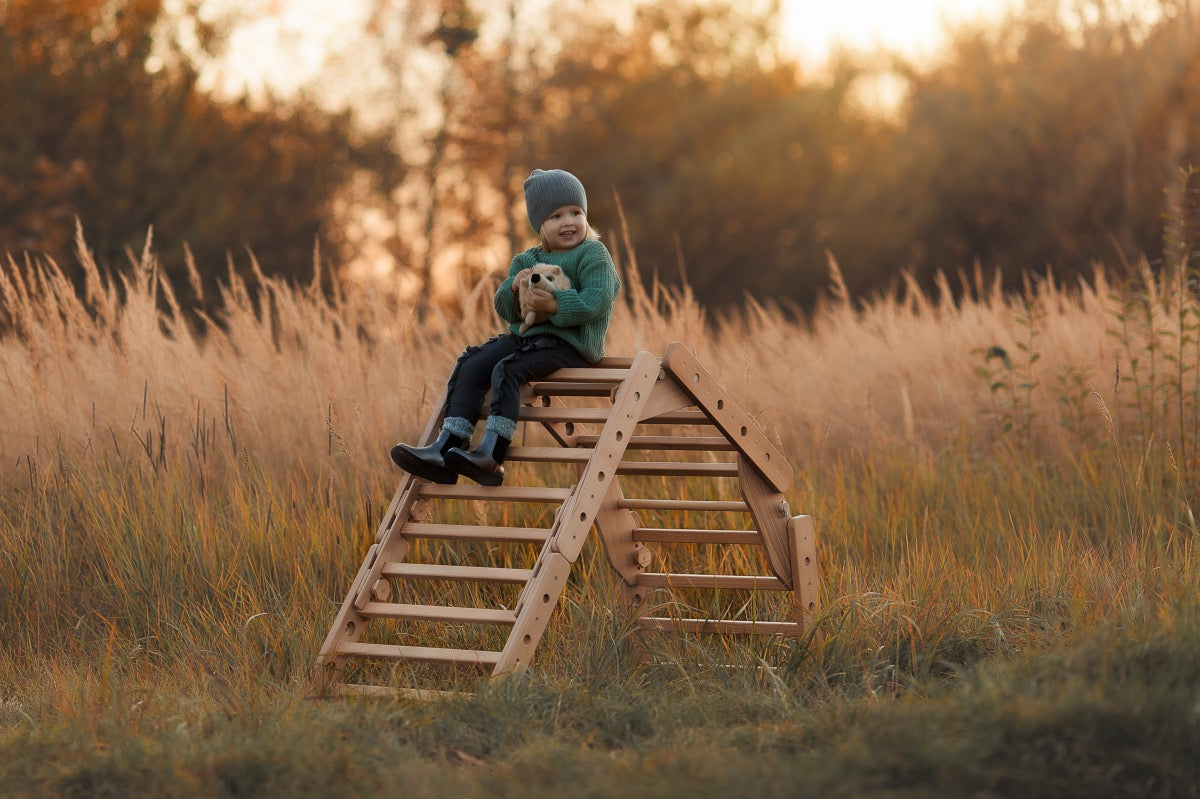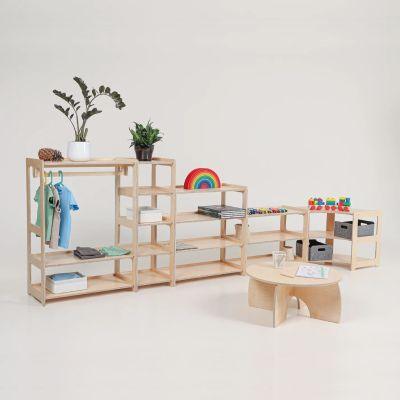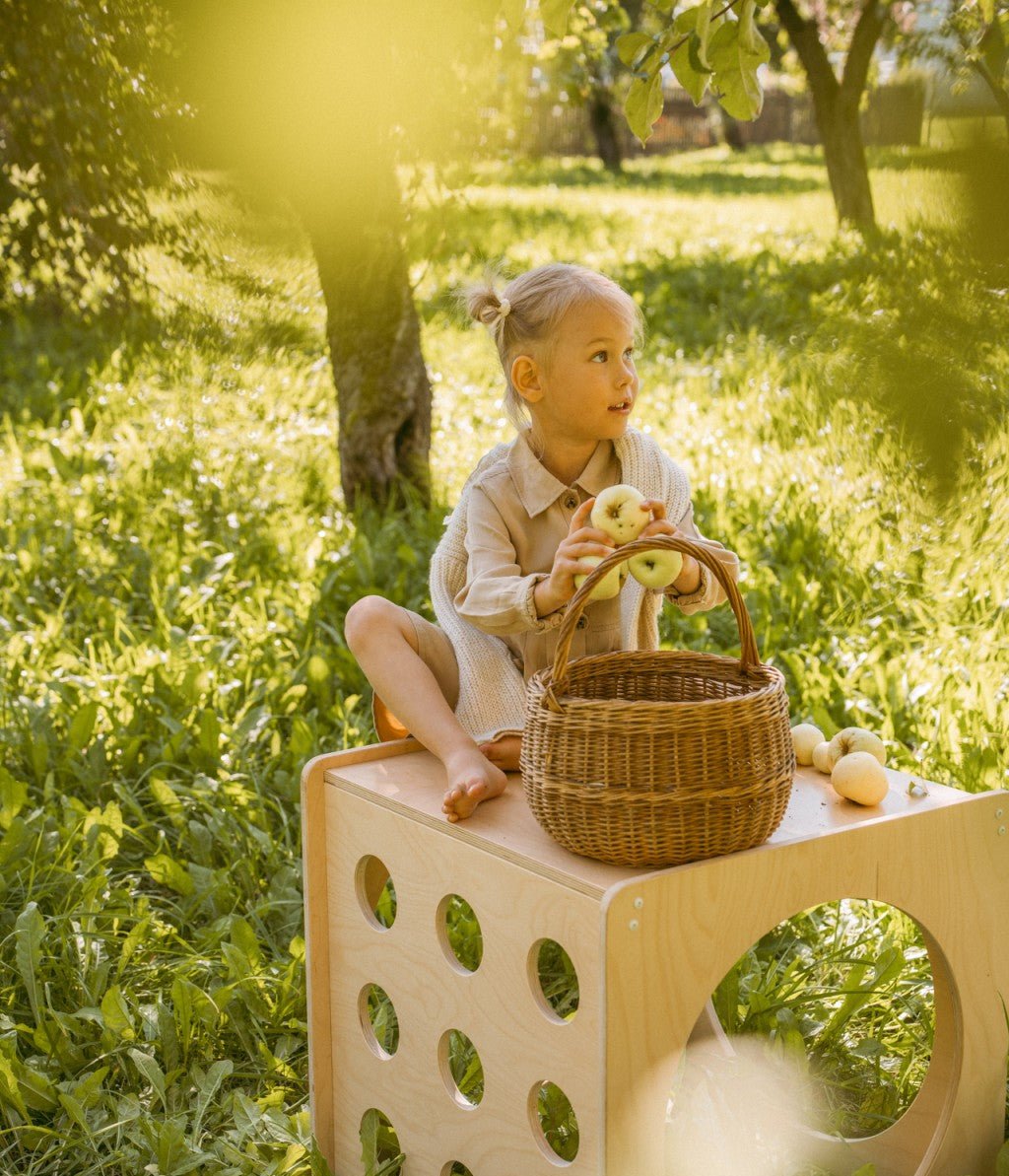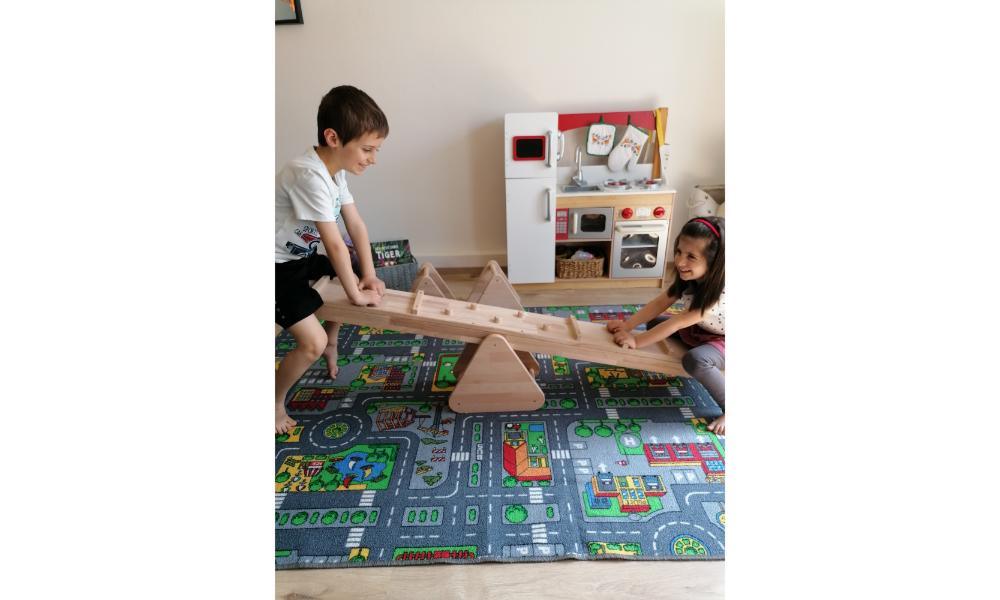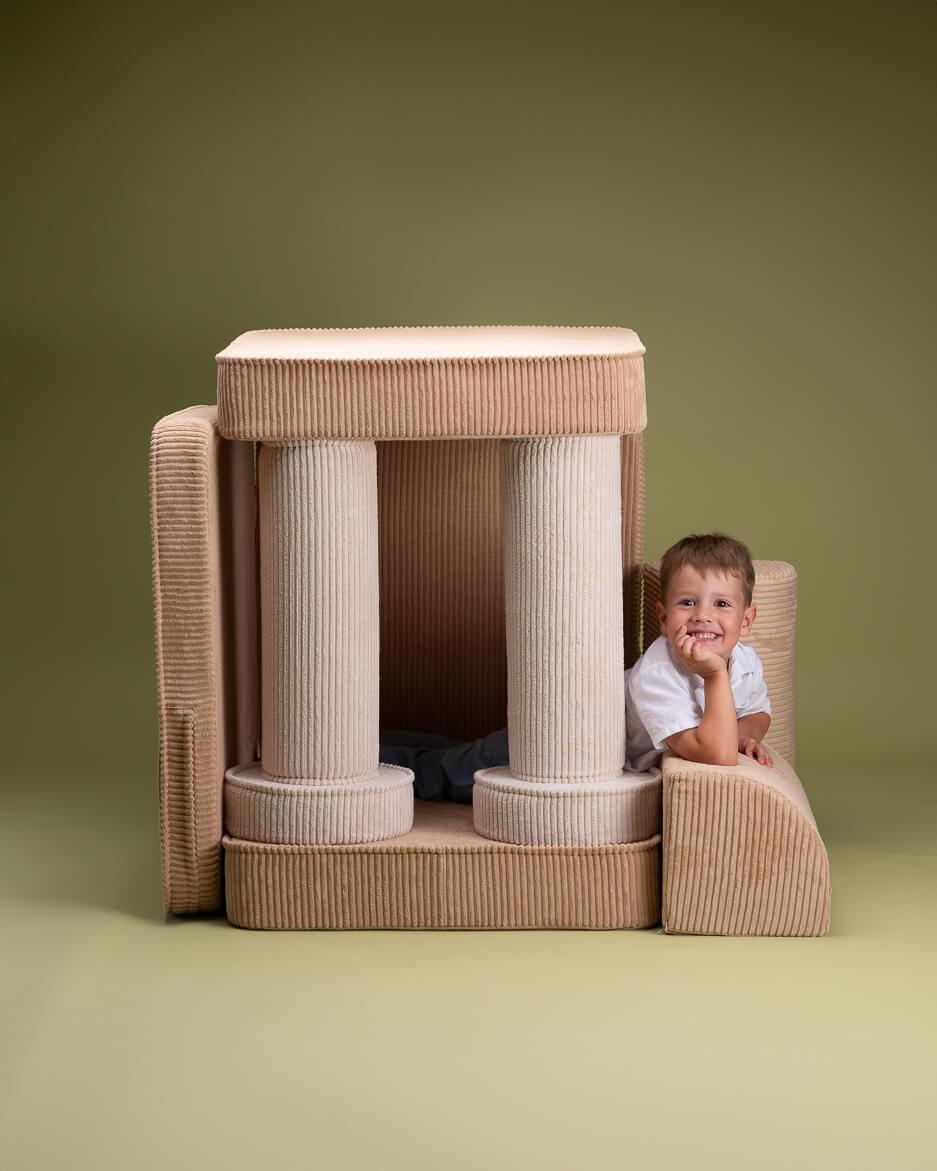Sort by:
5 products
5 products
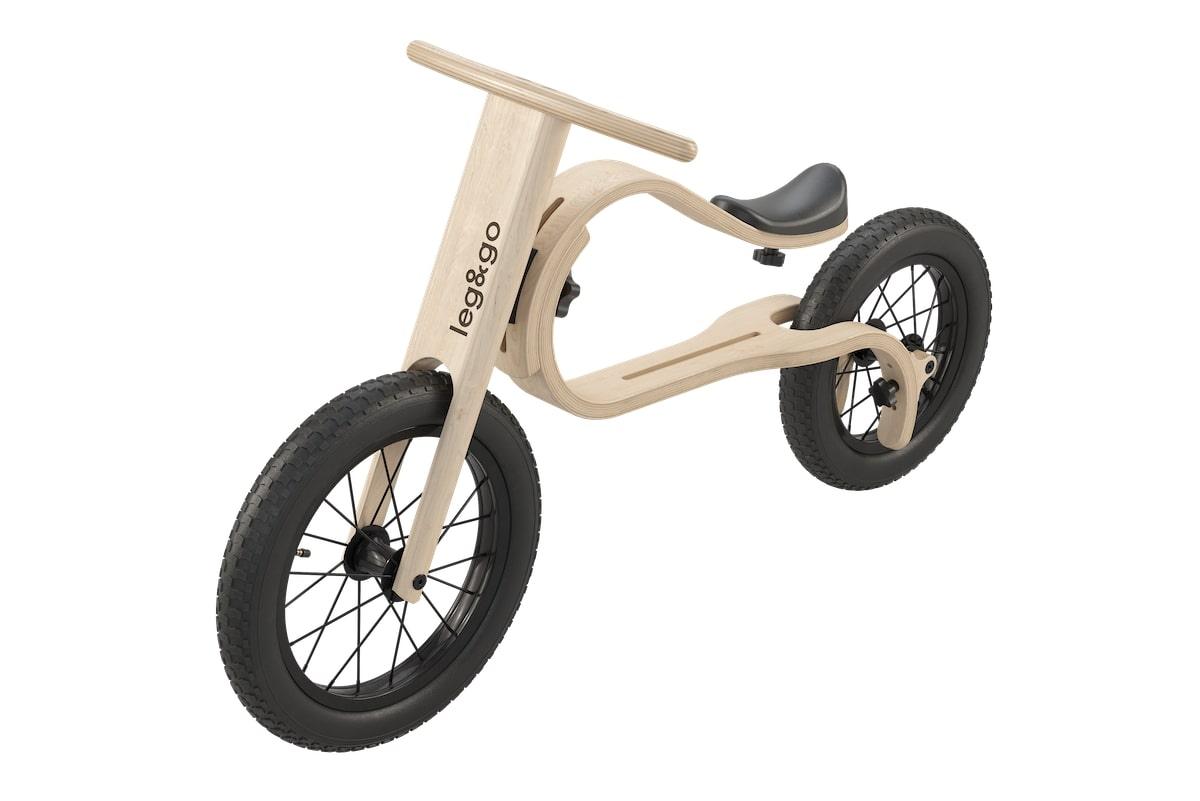

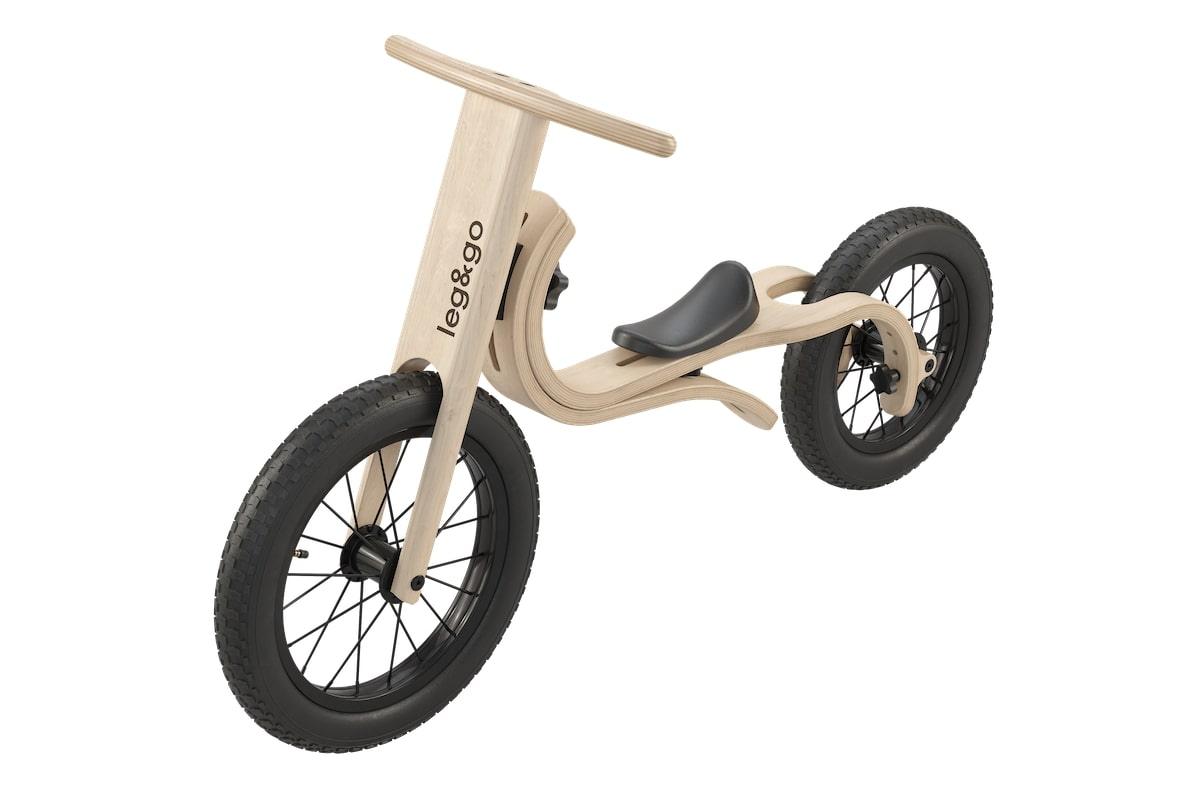
Balance Bike 3in1 made of wood - growing balance bike for children from 6 months to 6 years
From €99,00
Unit price perBalance Bike 3in1 made of wood - growing balance bike for children from 6 months to 6 years
From €99,00
Unit price perThe versatile organic bike - leg&go Balance Bike 3 in 1
The leg&go Balance Bike 3 in 1 is an ideal organic product for your child. Developed for children from 12 months, this wonderful bike grows with the child and adapts to the needs of the growing cyclist.
Development-promoting and safe
It is more than just a means of transport for children. This bike serves as an effective tool for developing a good sense of balance, coordinated movements and an upright posture in children. Equipped with a sturdy construction, it provides safety and stability, which are important for young riders
.Natural and environmentally friendly
In line with the principles of ecological sustainability, this sustainable product is made from natural and renewable raw materials. The frame and fork are made of painted birch plywood, which comes from sustainable forestry in Northern Europe.
Theuse of wood in the construction also provides excellent natural shock absorption and is easy on the backs of little users.
Lightweight and functional
The LEG & GO Balance Bike 3 in 1 weighs just 3.3 kg - a decisive factor that makes the bike easier to handle and attractive for little ones. Its intelligent frame construction and versatile frame parts make it quick and easy to convert so that it can be adapted to changing needs in no time at all.
Easy to clean and durable
Natural material doesn't mean you have to compromise on durability. Despite its light weight, the bike is durable and long-lasting thanks to its metal hub, wire spokes with metal rim and pneumatic rubber tyres. In addition, the bike's wheels and frame are easy to clean, making it a practical choice for parents
.Technical details
- Assembled dimensions (length x width x height): 102 x 35 x 57 cm
- Wheel diameter: front wheel 14", rear wheel 12"
- Wheel length: 95.4 to 99 cm _x000D_
- Saddle height: 25 to 47 cm
- Weight: 3.3 kg
Conclusion
The leg&go Balance Bike 3 in 1 is the perfect organic product that helps promote your child's physical development while respecting our planet. It is an excellent example of an eco-friendly toy that is fun, safe and planet-friendly at the same time. It is the perfect choice for eco-conscious parents who are looking for high quality, sustainable products that can be used for an extremely long time because the add-ons help to make the bike usable from an early age to an older age. It also replaces 4 products in one -> balance bike, tricycle, bicycle and downhill bike.
Discover the Choppy wooden balance bike , perfect design and fun
Introducing the Choppy wooden balance bike, a prime example of well thought-out, functional design combined with endless fun. Made from high-quality birch plywood from Latvia, Choppy not only offers an appealing exterior, but also guarantees durability and stability
Flexible customisation for growing adventurers
The Choppy wooden balance bike is characterised by its adaptability, which ensures that it grows with your child. The seat height can be comfortably adjusted between 31, 35 and 39 cm, while the handlebar height can be varied between 44 and 46 cm. This ensures a perfect fit and supports an ergonomic riding
position . Innovative mountingsystem , Play and learn
Another highlight is the innovative assembly system from Choppy. It allows you and your child to assemble the balance bike without any tools, similar to building blocks. This playful way of assembly not only develops your child's motor skills, but also their spatial imagination and technical understanding
.Gentle and safe on the move
The sprung seat of the balance bike protects your child's back during the ride by absorbing bumps and shocks. Weighing less than 3 kg, the balance bike is also surprisingly light, allowing children to steer and carry it effortlessly
Responsible production and packaging
Sustainability is at the forefront of Choppy's production and packaging. The wood used comes from sustainable forestry and the packaging is made from FSC-certified cardboard, which does not require glue and is therefore kind to the environment and nature. The packaging itself not only serves as a protective element during transport, but also as a game board that stimulates your child's sense of adventure
.A complete world of fun
In addition to the balance bike, the Choppy wooden balance bike comes with a storage box, which can also be used as a board game, and a set of stickers. This offers your child additional fun and encourages their creativity.
Product features
| Features | |
|---|---|
| Details | |
| Material | |
| High-quality birch plywood | |
| Recommended age | |
| 1-4 years | |
| Adjustable seat height | |
| 31 cm, 35 cm, 39 cm | |
| Adjustable handlebar height | |
| 44 cm - 46 cm | |
| Weight of the wheel | |
| Less than 3 kg | |
| Assembly | |
| Without tools, like a modular system | |
| Packaging | |
| FSC-certified cardboard, without adhesive, with built-in play | |
| Addition | Storage box/board game, sticker set |
Sustainability and safety , Our promise for your child
Our commitment to sustainability and safety is paramount. Choppy is not only made from sustainably sourced birch wood, but is also manufactured under fair production conditions. The paints and varnishes used are of course certified and free of harmful substances to ensure a safe environment for your child. Our product also complies with the applicable safety standards to ensure carefree and safe use
. Takethe initiative now for a sustainable and joyful childhood
Choose the Choppy wooden balance bike for your child and support a conscious and responsible decision. Take the first step towards a sustainable and joyful childhood. At [company name], we offer you transparency about production, material and production site as well as comprehensive customer service with personal contact. In addition, our expert advice service is always available to help you give your child the best play experience
.Choose the Choppy wooden balance bike now and watch your child discover the world with joy and curiosity. This toy is not only a gift for your child, but also a contribution to environmental protection and the promotion of sustainable lifestyles.
Discover the Choppy wooden balance bike , perfect design and fun
Introducing the Choppy wooden balance bike, a prime example of well thought-out, functional design combined with endless fun. Made from high-quality birch plywood from Latvia, Choppy not only offers an appealing exterior, but also guarantees durability and stability
Flexible customisation for growing adventurers
The Choppy wooden balance bike is characterised by its adaptability, which ensures that it grows with your child. The seat height can be comfortably adjusted between 31, 35 and 39 cm, while the handlebar height can be varied between 44 and 46 cm. This ensures a perfect fit and supports an ergonomic riding
position . Innovative mountingsystem , Play and learn
Another highlight is the innovative assembly system from Choppy. It allows you and your child to assemble the balance bike without any tools, similar to building blocks. This playful way of assembly not only develops your child's motor skills, but also their spatial imagination and technical understanding
.Gentle and safe on the move
The sprung seat of the balance bike protects your child's back during the ride by absorbing bumps and shocks. Weighing less than 3 kg, the balance bike is also surprisingly light, allowing children to steer and carry it effortlessly
Responsible production and packaging
Sustainability is at the forefront of Choppy's production and packaging. The wood used comes from sustainable forestry and the packaging is made from FSC-certified cardboard, which does not require glue and is therefore kind to the environment and nature. The packaging itself not only serves as a protective element during transport, but also as a game board that stimulates your child's sense of adventure
.A complete world of fun
In addition to the balance bike, the Choppy wooden balance bike comes with a storage box, which can also be used as a board game, and a set of stickers. This offers your child additional fun and encourages their creativity.
Product features
| Features | |
|---|---|
| Details | |
| Material | |
| High-quality birch plywood | |
| Recommended age | |
| 1-4 years | |
| Adjustable seat height | |
| 31 cm, 35 cm, 39 cm | |
| Adjustable handlebar height | |
| 44 cm - 46 cm | |
| Weight of the wheel | |
| Less than 3 kg | |
| Assembly | |
| Without tools, like a modular system | |
| Packaging | |
| FSC-certified cardboard, without adhesive, with built-in play | |
| Addition | Storage box/board game, sticker set |
Sustainability and safety , Our promise for your child
Our commitment to sustainability and safety is paramount. Choppy is not only made from sustainably sourced birch wood, but is also manufactured under fair production conditions. The paints and varnishes used are of course certified and free of harmful substances to ensure a safe environment for your child. Our product also complies with the applicable safety standards to ensure carefree and safe use
. Takethe initiative now for a sustainable and joyful childhood
Choose the Choppy wooden balance bike for your child and support a conscious and responsible decision. Take the first step towards a sustainable and joyful childhood. At [company name], we offer you transparency about production, material and production site as well as comprehensive customer service with personal contact. In addition, our expert advice service is always available to help you give your child the best play experience
.Choose the Choppy wooden balance bike now and watch your child discover the world with joy and curiosity. This toy is not only a gift for your child, but also a contribution to environmental protection and the promotion of sustainable lifestyles.
Discover the Choppy wooden balance bike , perfect design and fun
Introducing the Choppy wooden balance bike, a prime example of well thought-out, functional design combined with endless fun. Made from high-quality birch plywood from Latvia, Choppy not only offers an appealing exterior, but also guarantees durability and stability
Flexible customisation for growing adventurers
The Choppy wooden balance bike is characterised by its adaptability, which ensures that it grows with your child. The seat height can be comfortably adjusted between 31, 35 and 39 cm, while the handlebar height can be varied between 44 and 46 cm. This ensures a perfect fit and supports an ergonomic riding
position . Innovative mountingsystem , Play and learn
Another highlight is the innovative assembly system from Choppy. It allows you and your child to assemble the balance bike without any tools, similar to building blocks. This playful way of assembly not only develops your child's motor skills, but also their spatial imagination and technical understanding
.Gentle and safe on the move
The sprung seat of the balance bike protects your child's back during the ride by absorbing bumps and shocks. Weighing less than 3 kg, the balance bike is also surprisingly light, allowing children to steer and carry it effortlessly
Responsible production and packaging
Sustainability is at the forefront of Choppy's production and packaging. The wood used comes from sustainable forestry and the packaging is made from FSC-certified cardboard, which does not require glue and is therefore kind to the environment and nature. The packaging itself not only serves as a protective element during transport, but also as a game board that stimulates your child's sense of adventure
.A complete world of fun
In addition to the balance bike, the Choppy wooden balance bike comes with a storage box, which can also be used as a board game, and a set of stickers. This offers your child additional fun and encourages their creativity.
Product features
| Features | |
|---|---|
| Details | |
| Material | |
| High-quality birch plywood | |
| Recommended age | |
| 1-4 years | |
| Adjustable seat height | |
| 31 cm, 35 cm, 39 cm | |
| Adjustable handlebar height | |
| 44 cm - 46 cm | |
| Weight of the wheel | |
| Less than 3 kg | |
| Assembly | |
| Without tools, like a modular system | |
| Packaging | |
| FSC-certified cardboard, without adhesive, with built-in play | |
| Addition | Storage box/board game, sticker set |
Sustainability and safety , Our promise for your child
Our commitment to sustainability and safety is paramount. Choppy is not only made from sustainably sourced birch wood, but is also manufactured under fair production conditions. The paints and varnishes used are of course certified and free of harmful substances to ensure a safe environment for your child. Our product also complies with the applicable safety standards to ensure carefree and safe use
. Takethe initiative now for a sustainable and joyful childhood
Choose the Choppy wooden balance bike for your child and support a conscious and responsible decision. Take the first step towards a sustainable and joyful childhood. At [company name], we offer you transparency about production, material and production site as well as comprehensive customer service with personal contact. In addition, our expert advice service is always available to help you give your child the best play experience
.Choose the Choppy wooden balance bike now and watch your child discover the world with joy and curiosity. This toy is not only a gift for your child, but also a contribution to environmental protection and the promotion of sustainable lifestyles.
Suchst du nach einem Geschenk, das garantiert Freude bereitet und genau den Geschmack des Beschenkten trifft? Mit einem Kletterling Geschenkgutschein liegst du immer richtig! Unser Gutschein ist die ideale Lösung für alle, die Kindern eine Freude machen möchten, aber nicht sicher sind, welches unserer hochwertigen Spielgeräte am besten passt.
Warum ein Kletterling Gutschein das perfekte Geschenk ist
Ein Geschenkgutschein von Kletterling bietet weit mehr als nur einen Warenwert – er schenkt Wahlfreiheit, Vorfreude und die Möglichkeit, genau das Spielgerät auszusuchen, das perfekt zu den individuellen Bedürfnissen und Wünschen des Kindes passt.
Die Vorteile unseres Gutscheins auf einen Blick:
• Flexible Auswahl – Der Beschenkte kann selbst entscheiden, ob er einen Kletterbogen, eine Matschküche, ein Kindersofa oder eines unserer vielen anderen Qualitätsprodukte wählt
• Langfristige Gültigkeit – Unser Gutschein ist 3 Jahre lang einlösbar, sodass genügend Zeit für die perfekte Auswahl bleibt
• Persönliches Geschenk – Du kannst den Gutscheinbetrag frei wählen und so an dein Budget anpassen
• Einfache Einlösung – Problemlose Verwendung in unserem Online-Shop mit nur wenigen Klicks
• Sofort verfügbar – Nach dem Kauf erhältst du den Gutschein direkt per E-Mail zum Ausdrucken oder Weiterleiten
So funktioniert der Kletterling Gutschein
Unser Gutscheinsystem ist bewusst einfach und unkompliziert gestaltet:
1. Wunschbetrag auswählen – Entscheide dich für einen Betrag deiner Wahl
2. Bestellen und bezahlen – Wie bei einem normalen Produkt in unserem Shop
3. Gutschein erhalten – Der Gutscheincode wird dir per E-Mail zugesendet
4. Verschenken – Drucke den Gutschein aus oder leite die E-Mail weiter
5. Einlösen – Der Beschenkte kann den Gutscheincode bei seiner Bestellung im Warenkorb einlösen
Der perfekte Anlass für einen Kletterling Gutschein
Ob Geburtstag, Weihnachten, Ostern oder einfach als Überraschung zwischendurch – ein Kletterling Gutschein passt zu jedem Anlass:
• Zum Geburtstag – Schenke die Freiheit, sich einen langgehegten Wunsch zu erfüllen
• Zu Weihnachten – Der ideale Gutschein für unter den Weihnachtsbaum
• Zur Geburt oder Taufe – Ein wertvolles Geschenk, das für die Zukunft des Kindes investiert wird
• Für Großeltern, Paten und Freunde – Die perfekte Lösung, wenn man nicht täglich mit dem Kind zusammen ist und seine aktuellen Wünsche kennt
Qualität und Werte schenken
Mit einem Kletterling Gutschein verschenkst du nicht nur einen Warenwert, sondern auch unsere Philosophie: hochwertige, entwicklungsfördernde Spielgeräte, die mit Liebe zum Detail gefertigt werden und Kindern helfen, ihre motorischen und kognitiven Fähigkeiten spielerisch zu entfalten.
Unser Sortiment umfasst ausschließlich Produkte, die wir sorgfältig ausgewählt haben und hinter denen wir als Familienunternehmen mit unserem Namen stehen. Von nachhaltigen Materialien bis hin zu durchdachten Designs – wer bei Kletterling einkauft, entscheidet sich für Qualität und Nachhaltigkeit.
Tipp: Wenn du unsicher bist, welchen Betrag du wählen sollst, orientiere dich an unseren Produktkategorien. Für Kletterdreiecke oder kleinere Spielgeräte eignen sich Beträge ab 100 €, für größere Klettergerüste oder Komplettsets kannst du auch höhere Summen verschenken.
Fazit: Ein Kletterling Geschenkgutschein ist die perfekte Lösung für alle, die Kindern eine Freude machen und gleichzeitig die Entscheidungsfreiheit schenken möchten. Mit seiner langen Gültigkeit, der einfachen Einlösung und der Möglichkeit, aus unserem gesamten hochwertigen Sortiment zu wählen, wird dieser Gutschein garantiert für leuchtende Kinderaugen sorgen.
Schenke Spielfreude, Entwicklungsförderung und Qualität – mit einem Kletterling Geschenkgutschein!
Entdecke Kletterling
Kletterdreiecke sind nur der Start in eine bewegte Kindheit. Du findest bei uns Kindermöbel, Sprossenwände, Sitzsäcke, Sofas, Schaukeln und noch so viel mehr.

Familienunternehmen mit Herz
Persönlich beraten
Wir beraten dich persönlich in Entwicklungs- und Einrichtungsfragen bequem zu Hause. Schon ein paar leicht aufzustellende und sichere Bewegungselemente, wie ein Kletterdreieck, verändern die Auslastung deines Kindes und damit seine Stimmung zum Positiven. Doch das ist nur der Anfang, mit uns kannst du euer Zuhause in einen Ort verwandeln, in dem dein Kind jederzeit seinem Bedürfnis nach Bewegung und Entspannung nachgehen kann und dann passiert etwas Magisches, wie von Zauberhand zieht Gelassenheit bei euch ein, in deinem Kind und in dir!
Wir sind Isabell, Erik und Kosmo. Gegründet haben wir Kletterling aus der Not heraus: Qualität wird so oft mit Marketing-Blabla vorgetäuscht. Wir wollen so viel Transparenz, wie möglich ist. Aus welchem Material ist mein Kinderspielzeug, woher kommt es und wurden Chemikalien verwendet? Wie steht es um die Sicherheit und wird es wirklich in Europa produziert? In China produziert, in Deutschland zusammengebaut und dann Made in Germany, gibt es bei uns nicht. Alle Produkte stammen von kleinen Herstellern aus Europa, denen wir hier ihre verdiente Plattform bieten. Dabei hapert es meist am Kundendienst in einer fremden Sprache, den wir komplett übernehmen, weil wir es lieben, mit euch im Austausch zu stehen, was heutzutage leider immer seltener wird.
Außerdem kaufst du bei uns mit sicheren Zahlmethoden in Deutschland bei einem deutschen Unternehmen ein, was dir ein gutes Gefühl und Sicherheit bringt, damit du dich voll auf das konzentrieren kannst, weshalb du hier bist: Das richtige Bewegungsspielzeug für dein Kind zu finden.
Danke für dein Vertrauen!
- Isabell & Erik
Kategoriebeschreibung
Balance bike: Which model is right for your child?
 A balance bike can be the gateway to the world of mobility for your child.
A balance bike can be the gateway to the world of mobility for your child.
Even at a young age, it not only promotes motor skills but also self-confidence.
But how do you choose the right model from the multitude of options?
And what really makes a good balance bike?
In the following sections, you'll learn everything you need to know about the different types of balance bikes, their safety features, and how to find the ideal balance bike for your child. Whether for a quick trip to the playground or as preparation for their first real bike, a balance bike is more than just a toy.
It is an important companion in your child’s development.
Let’s find out together how you can make the best choice.
Choosing the right wheel
If you are looking for the perfect balance bike for your child, it is essential to choose the right size and material.
These factors not only guarantee safety but also promote driving pleasure.
 Age-appropriate size and type
Age-appropriate size and type
The size of the balance bike must match your child’s height.
For children 1 year and older, for example, balance bikes with 12-inch tires are ideal because they allow a safe foot reach.
From 2 years of age, a 14-inch balance bike might be more suitable, depending on how quickly your child grows.
Check the saddle and handlebar height so your child can place both feet flat on the ground, which helps with balancing.
Materials and durability
Balance bikes are available in a variety of materials, including wood and metal.
Wooden balance bikes like the "Choppy" balance bikes are light and ecological.
Metal frames offer high durability and are often equipped with a brake for additional safety.
Choose a model that is robust enough to withstand your child's activities and also has safety-tested components.
Safety features of a balance bike
When purchasing a balance bike, safety features play a crucial role. They ensure that your child learns to ride safely and with fun.
 The importance of brakes
The importance of brakes
Brakes are essential on a balance bike, especially when your child starts to ride faster.
A model with a brake allows your child to learn to control their speed and stop safely.
This not only promotes safety but also supports the development of motor skills.
Safety certificates and standards
Safety certifications such as the CE marking are crucial when choosing a balance bike. They ensure that the bike meets strict European safety regulations.
Make sure your child's balance bike meets certified safety standards such as EN 71, the European standard for toy safety.
These certificates are proof that the balance bike has been thoroughly tested and safe materials have been used, giving you as a parent additional peace of mind.
Advantages of balance bikes for children
Balance bikes not only provide children with fun, but also support their development in many ways.
From motor skills to independence, a balance bike can make a significant difference in a child's early development.
Development of motor skills
Balance bikes effectively improve your child’s motor skills.
By using a balance bike, your child learns to keep balance and coordinate his movements.
These activities strengthen muscles, improve posture and increase physical endurance.
Early training on a balance bike optimally prepares children for cycling by allowing them to learn the basics of locomotion before they even start pedaling.
Promoting independence
A balance bike can significantly increase your child's self-confidence.
As children learn to move around independently, they develop a sense of independence and self-confidence.
Models like a balance bike with brakes also allow children to learn to control their speed and stop safely. This not only promotes safety but also a sense of responsibility.
A balance bike therefore offers an excellent opportunity for your child to practice important life skills in a safe and controlled environment.
Care and maintenance of wheels
After you have chosen the perfect balance bike for your child, it is crucial that you take proper care of the balance bike.
Good care not only extends the life of the balance bike, but also ensures that your child can ride safely and with complete confidence.
 Cleaning and storage
Cleaning and storage
Regular cleaning of the impeller keeps it in top condition.
You should wipe the wheel with a damp cloth after each use to remove dirt and dust.
Avoid using harsh cleaning agents that could damage materials such as wood or metal.
When storing the wheel, it is important to place it in a dry and protected place.
Direct sunlight or moisture can affect the material of the impeller, whether wood or metal, and shorten its lifespan.
Common maintenance tasks
Regular maintenance tasks include checking and, if necessary, tightening the screws.
Since wheels are often used intensively, screws can loosen over time.
The wheels should also be checked regularly for wear and replaced as needed. A 12-inch or 14-inch balance bike with brakes also requires regular checks of the brake function to ensure your child can stop safely at any time. The brakes should be easy to operate and work reliably.
For wooden models, it is also advisable to check the surface periodically and, if necessary, reseal it to protect the material from the elements.
Conclusion
The balance bike is more than just a toy; it is a crucial tool for your child's development.
It not only promotes motor skills and self-confidence, but also prepares children for cycling in a playful way.
The selection of the right balance bike should therefore be done carefully, taking into account size, material and safety features.
Remember that a safety-tested and well-maintained balance bike provides the best support for your child to learn actively and safely.
With the right balance bike, you give your child the joy of movement and lay the foundation for healthy mobility development.
Frequently Asked Questions (FAQ)
What are the advantages of balance bikes for small children?
Balance bikes promote children's motor skills and balance, prepare them for cycling and increase their self-confidence through control over their own mobility.
How do you choose the right balance bike size for a child?
The balance bike size should match the child's height. A 12-inch balance bike is generally recommended for children 1 year and older, and a 14-inch balance bike for children 2 years and older.
Which materials are recommended for wheels?
Wooden balance bikes are lightweight and environmentally friendly, while metal frames are more robust and durable. The choice of material depends on individual needs and preferences.
Why is it important that a balance bike has safety certificates?
Safety certificates such as the CE marking confirm that a balance bike meets European safety regulations and uses safe components, which is essential for children's safety.
How do you properly care for and maintain a balance bike?
Regular cleaning and proper storage are crucial. It's important to check and tighten screws regularly, as well as to check the brakes for proper function. Wooden balance bikes should also be sealed regularly to protect them from the elements.
Top Categories: Velcro scaffolding | Mud kitchen | Children's scooters

